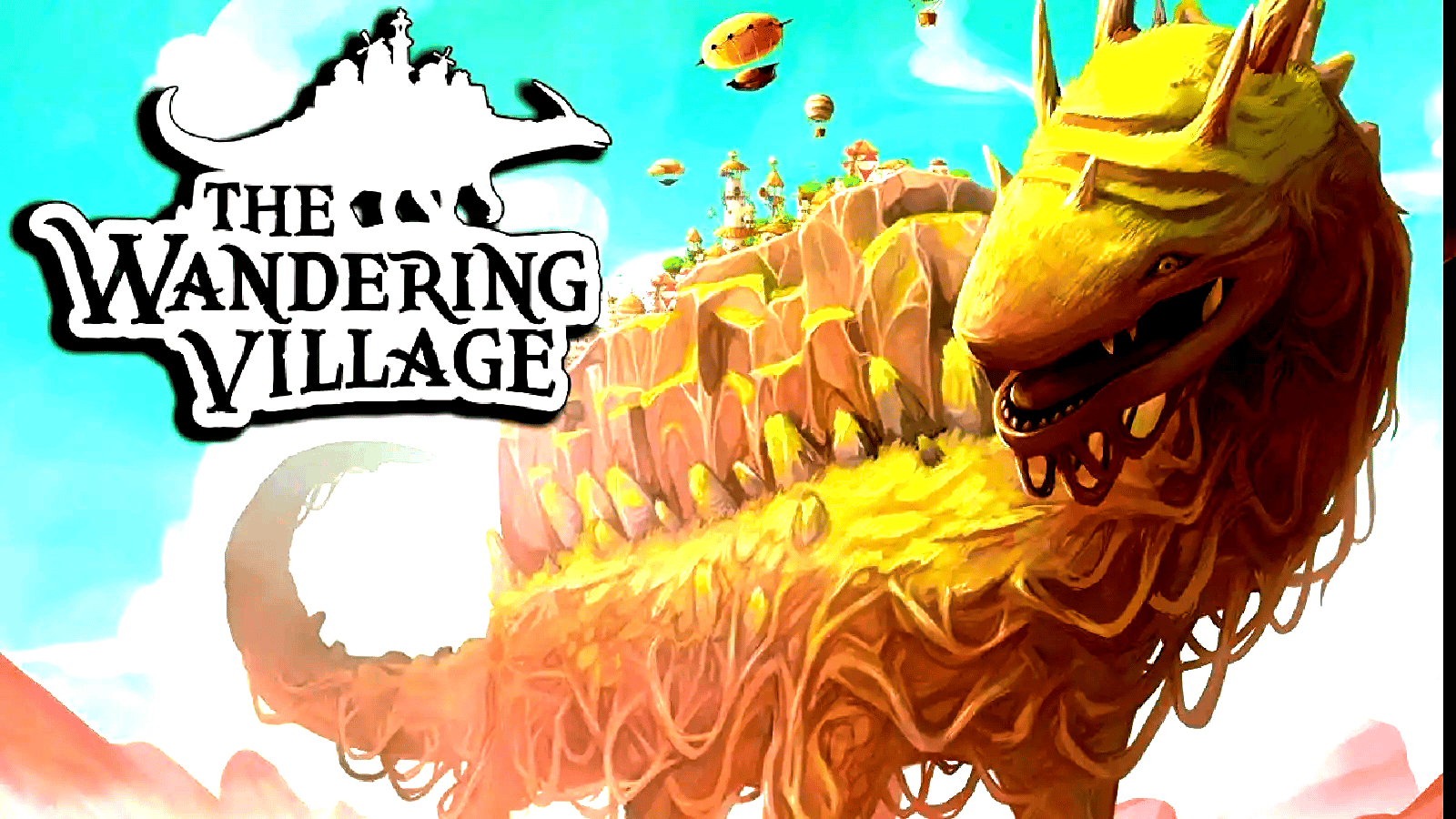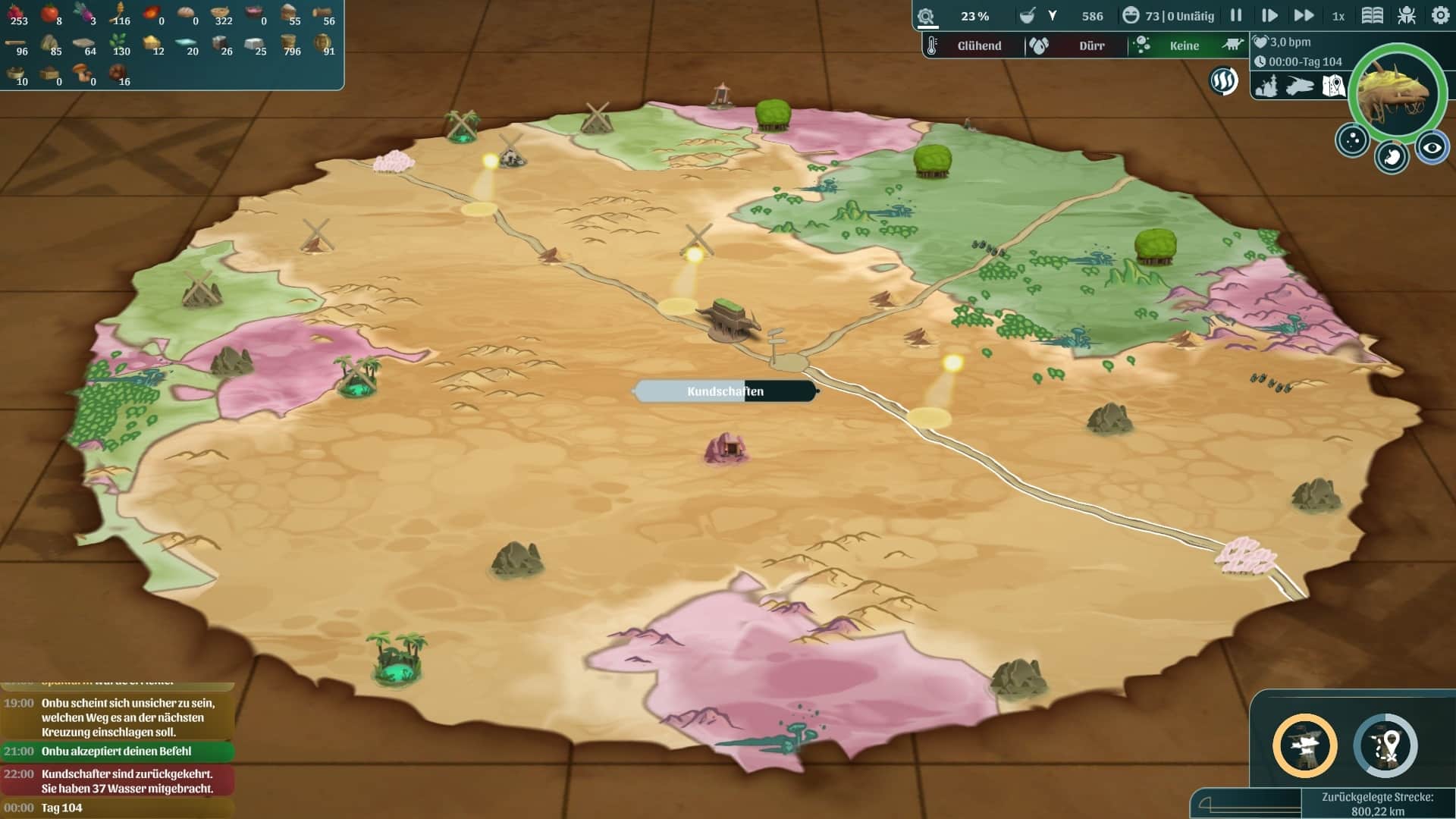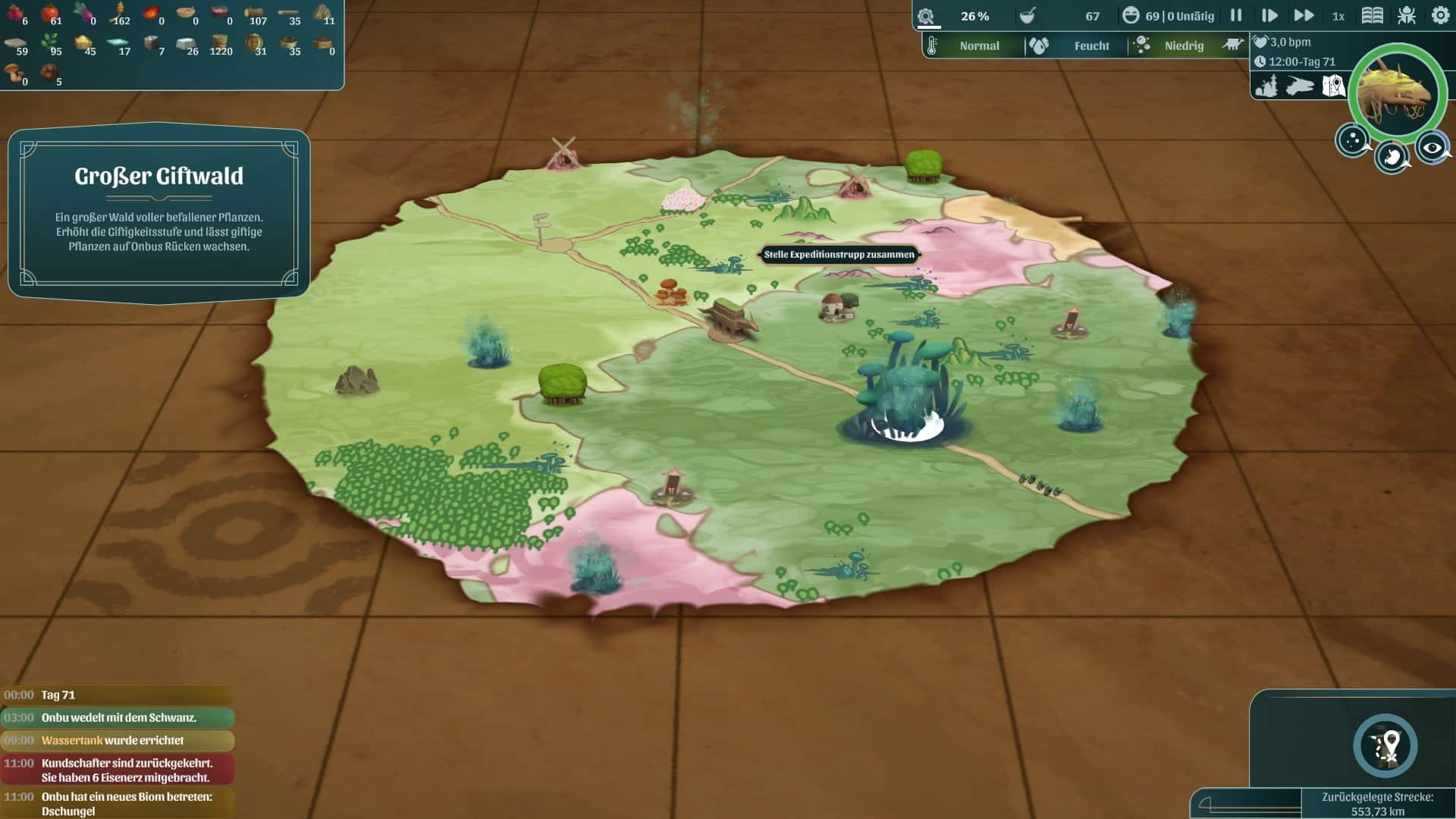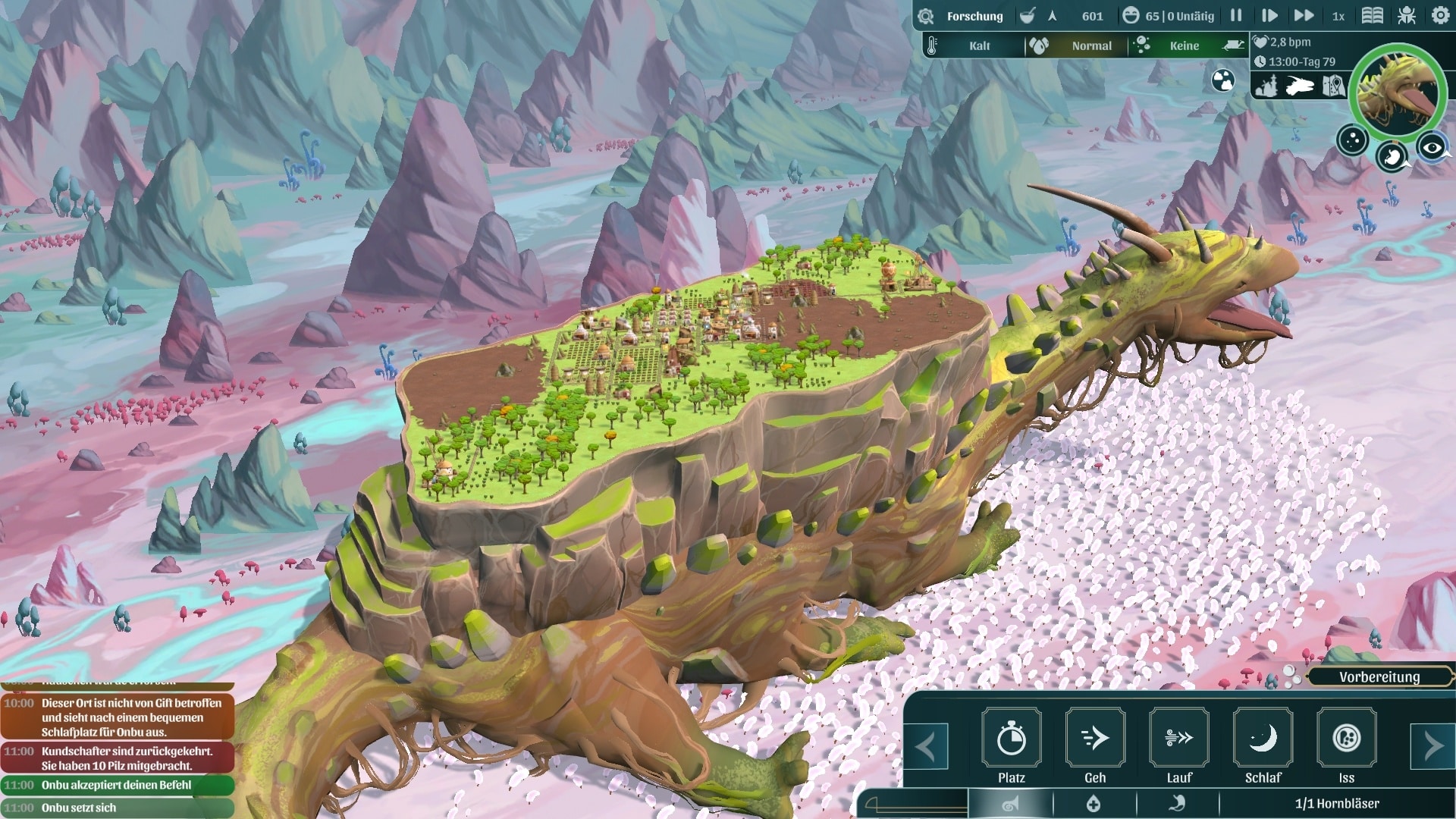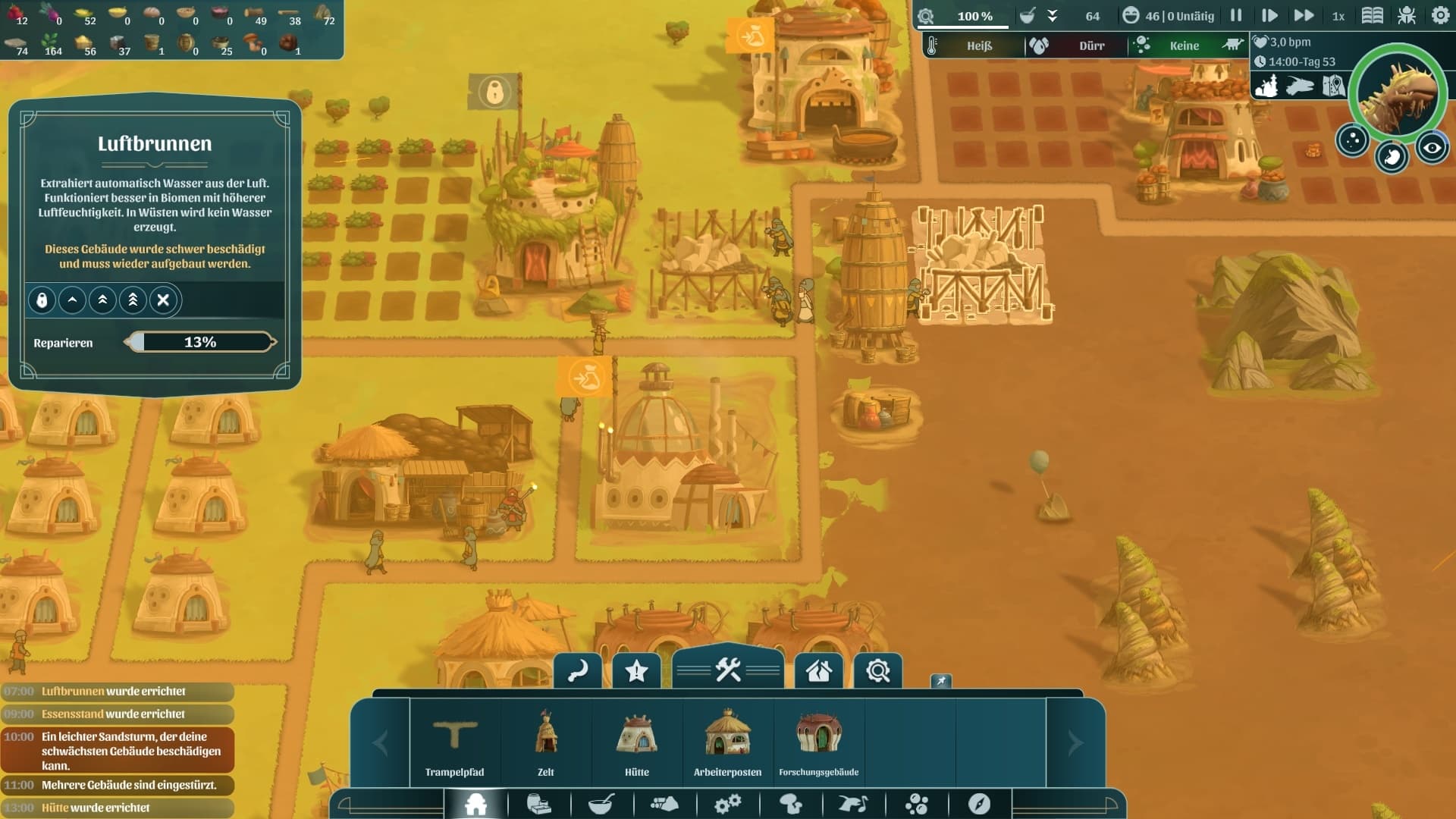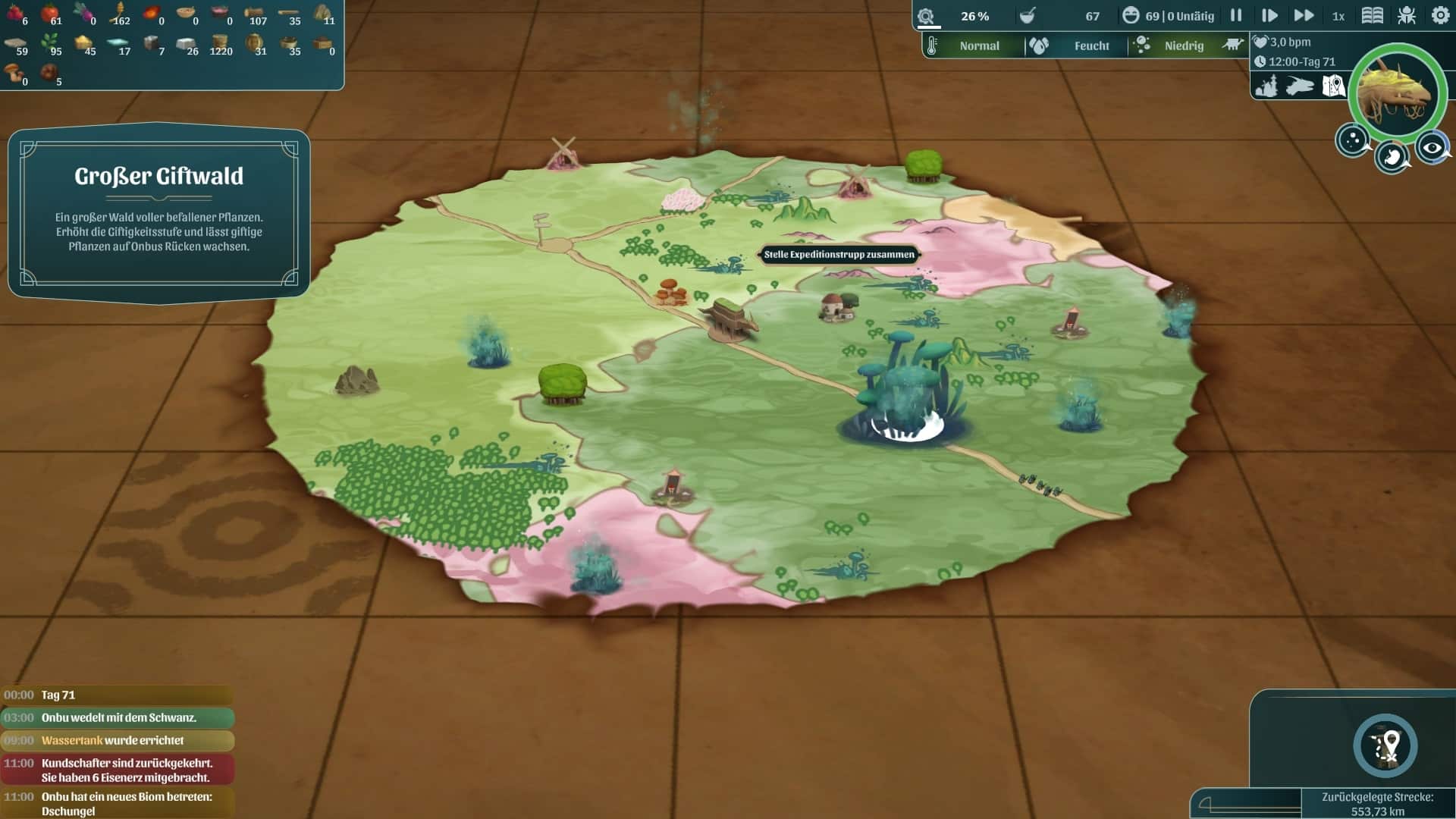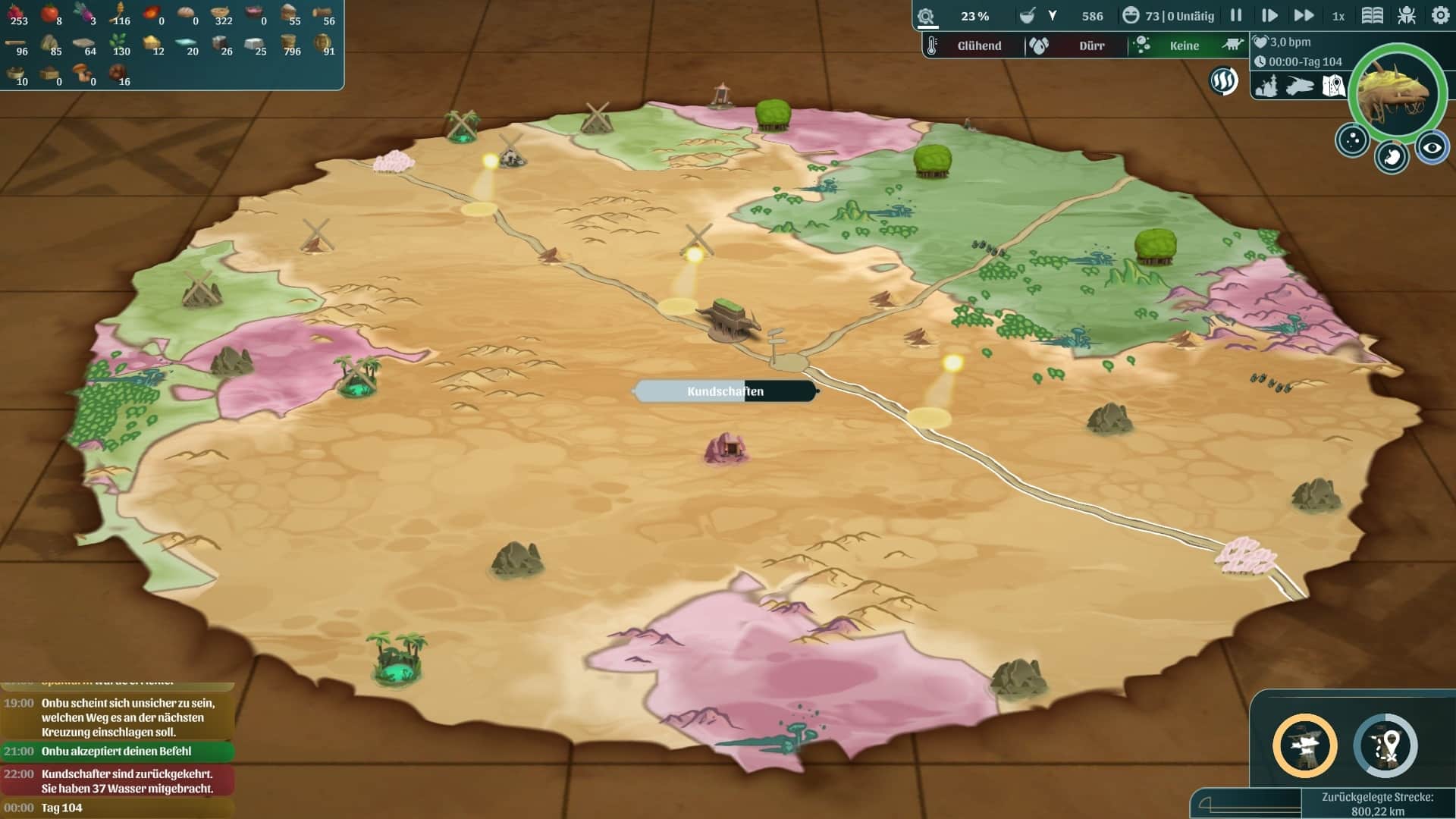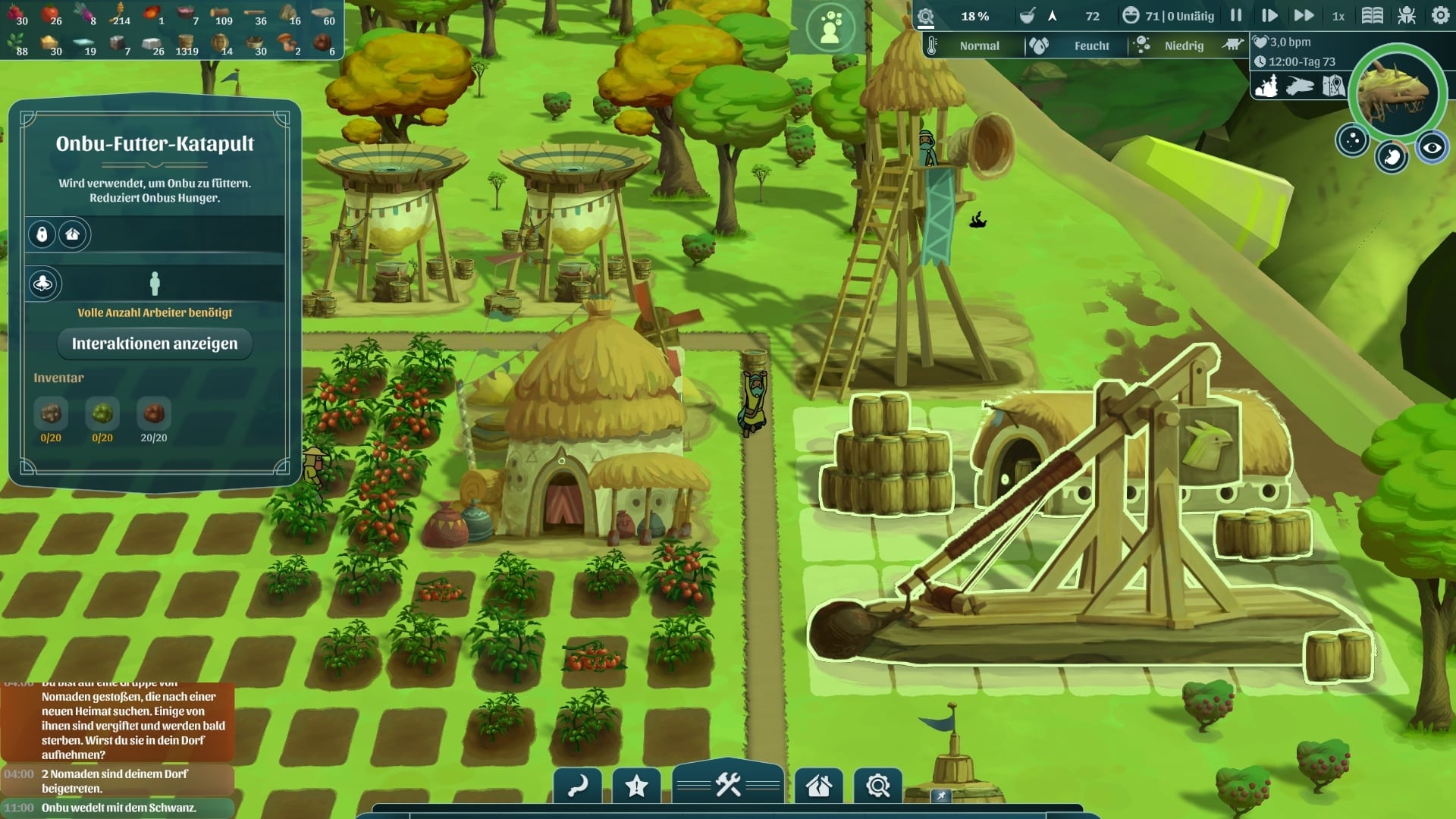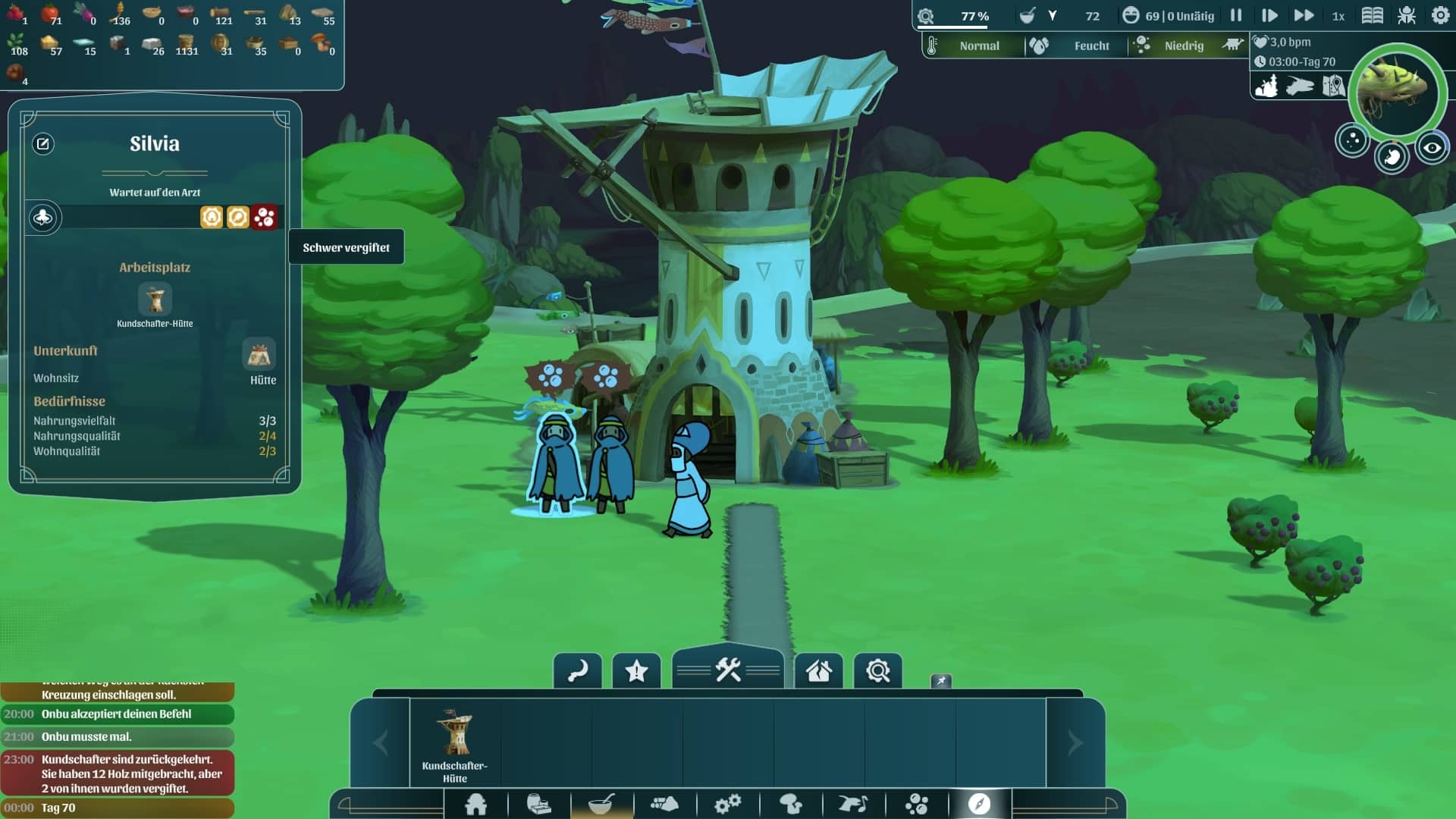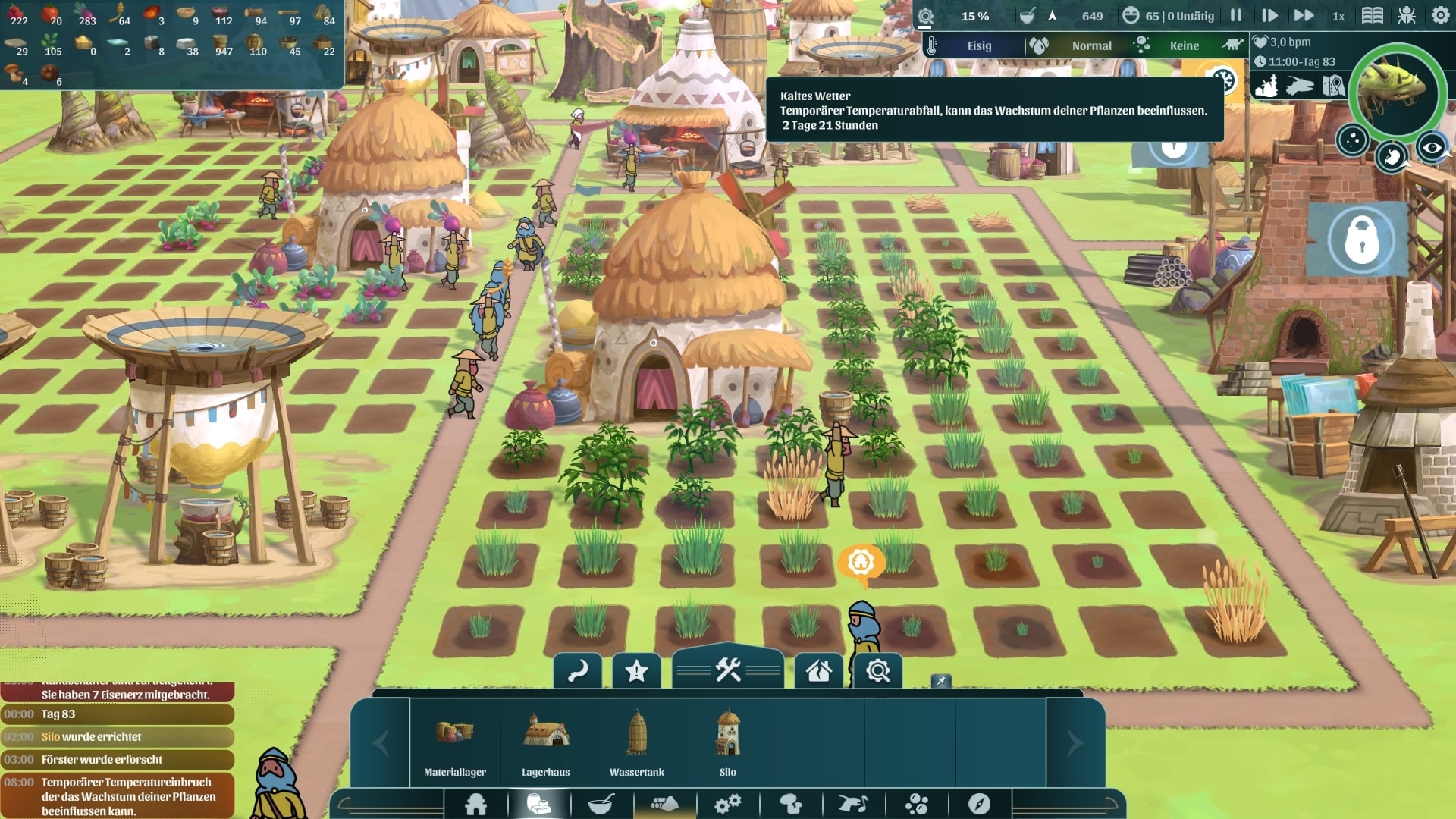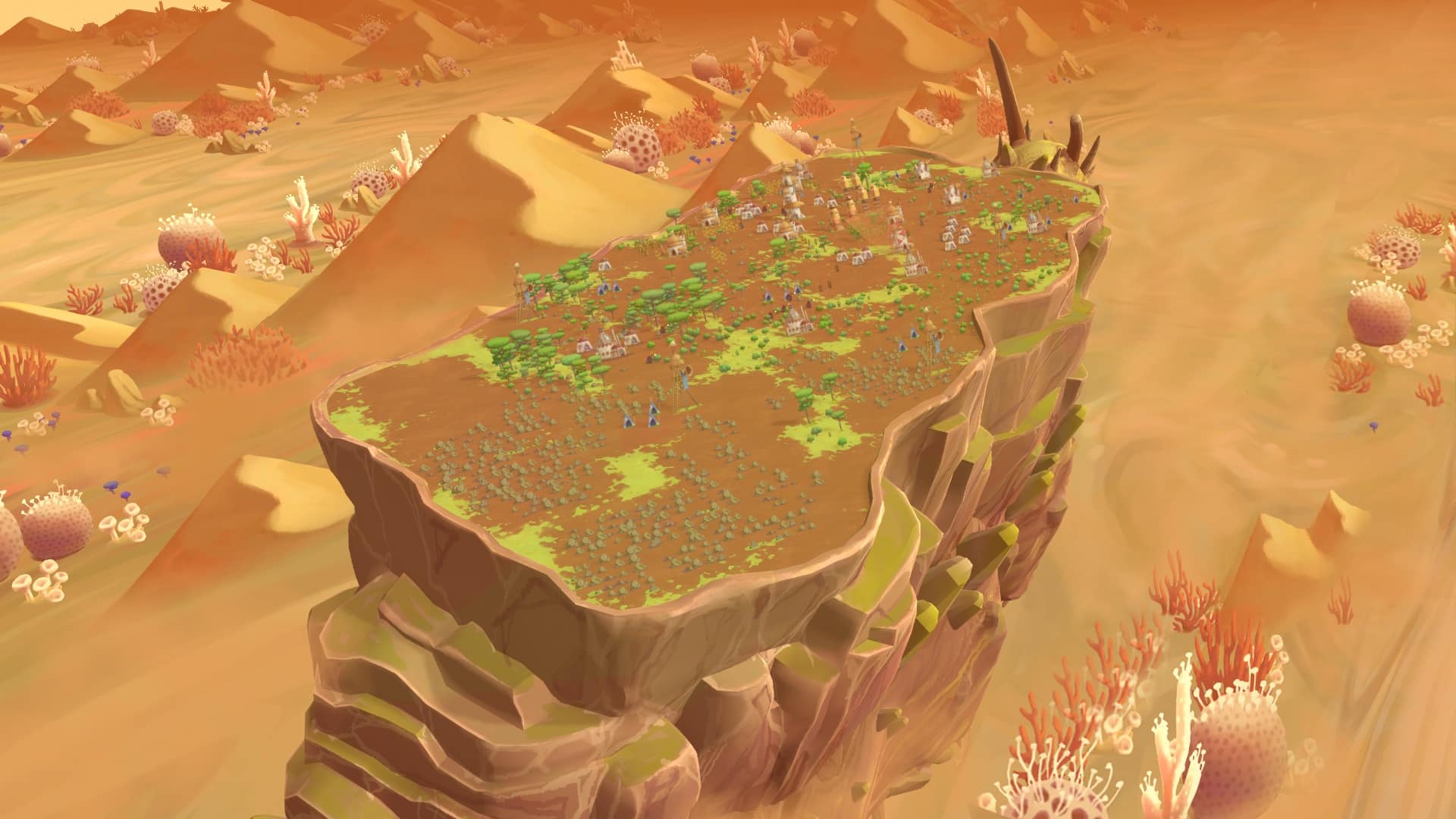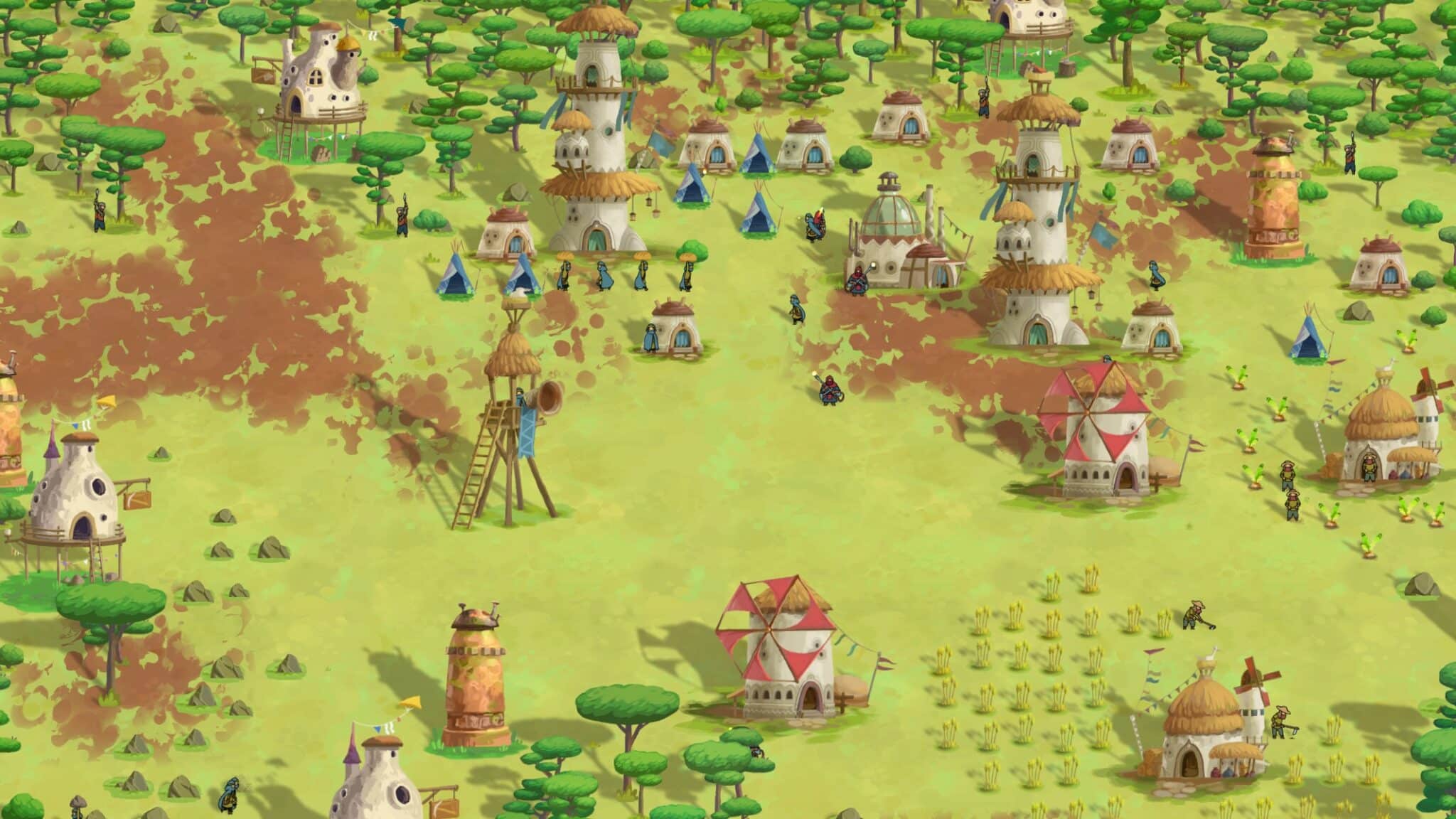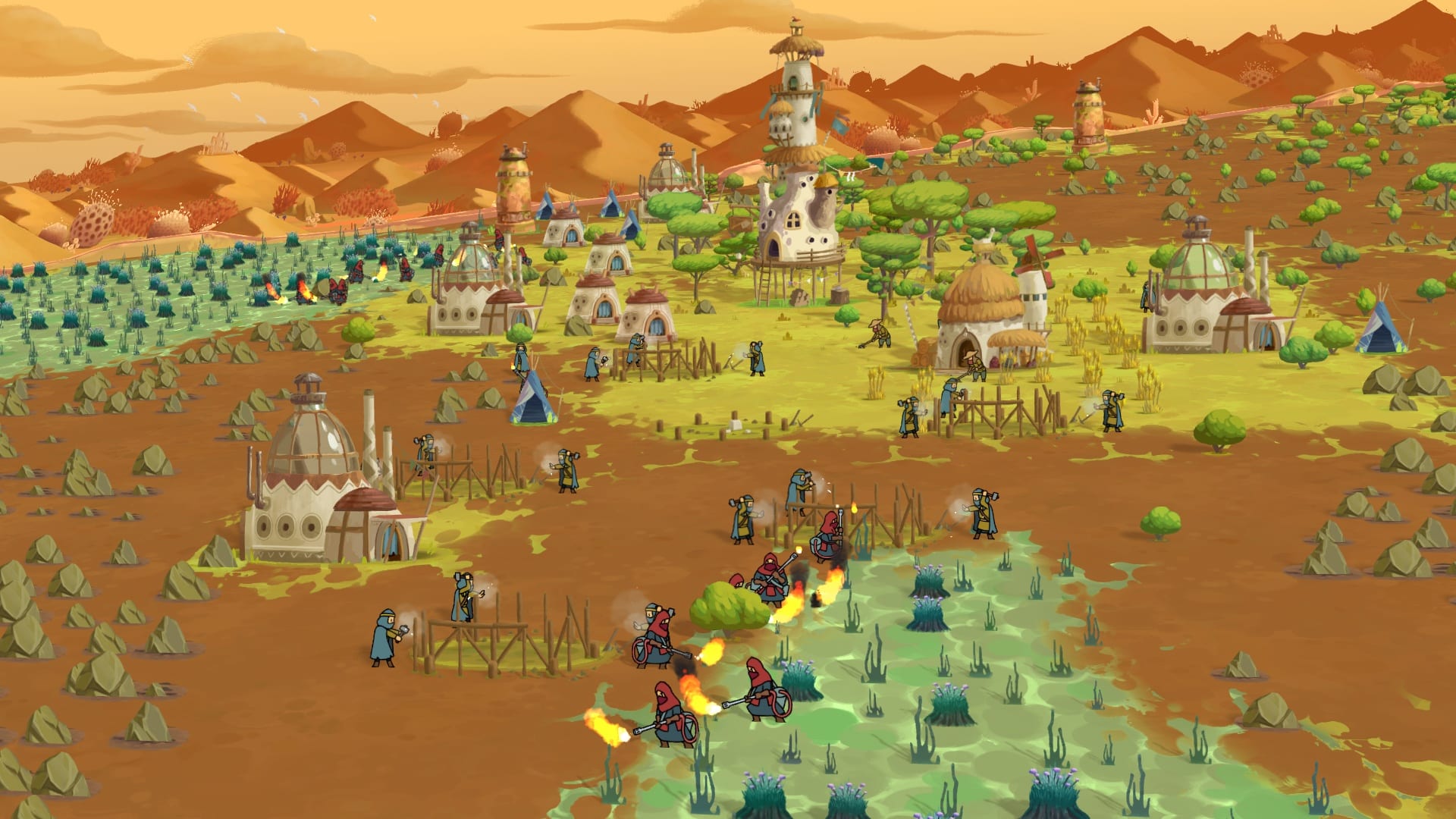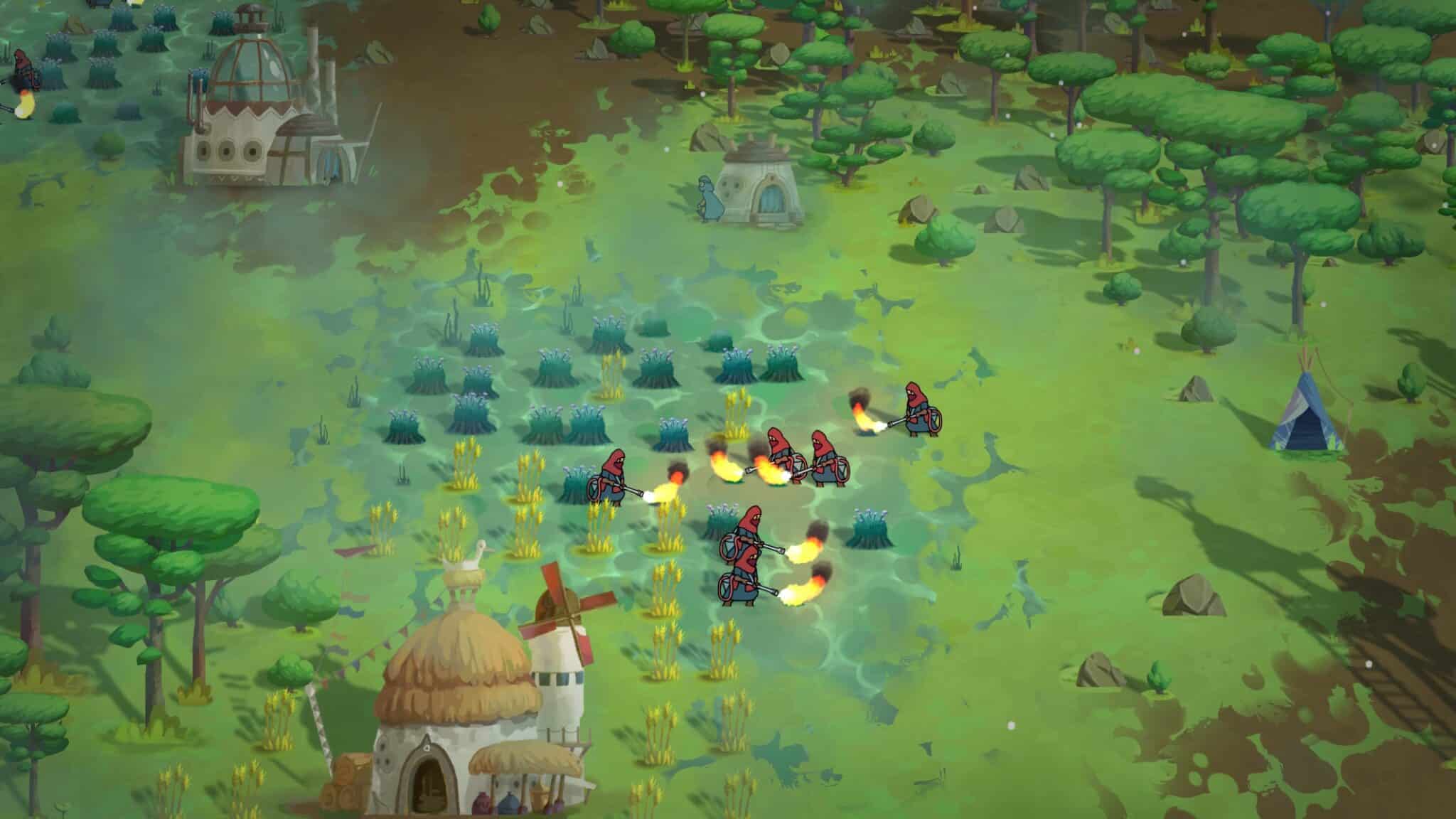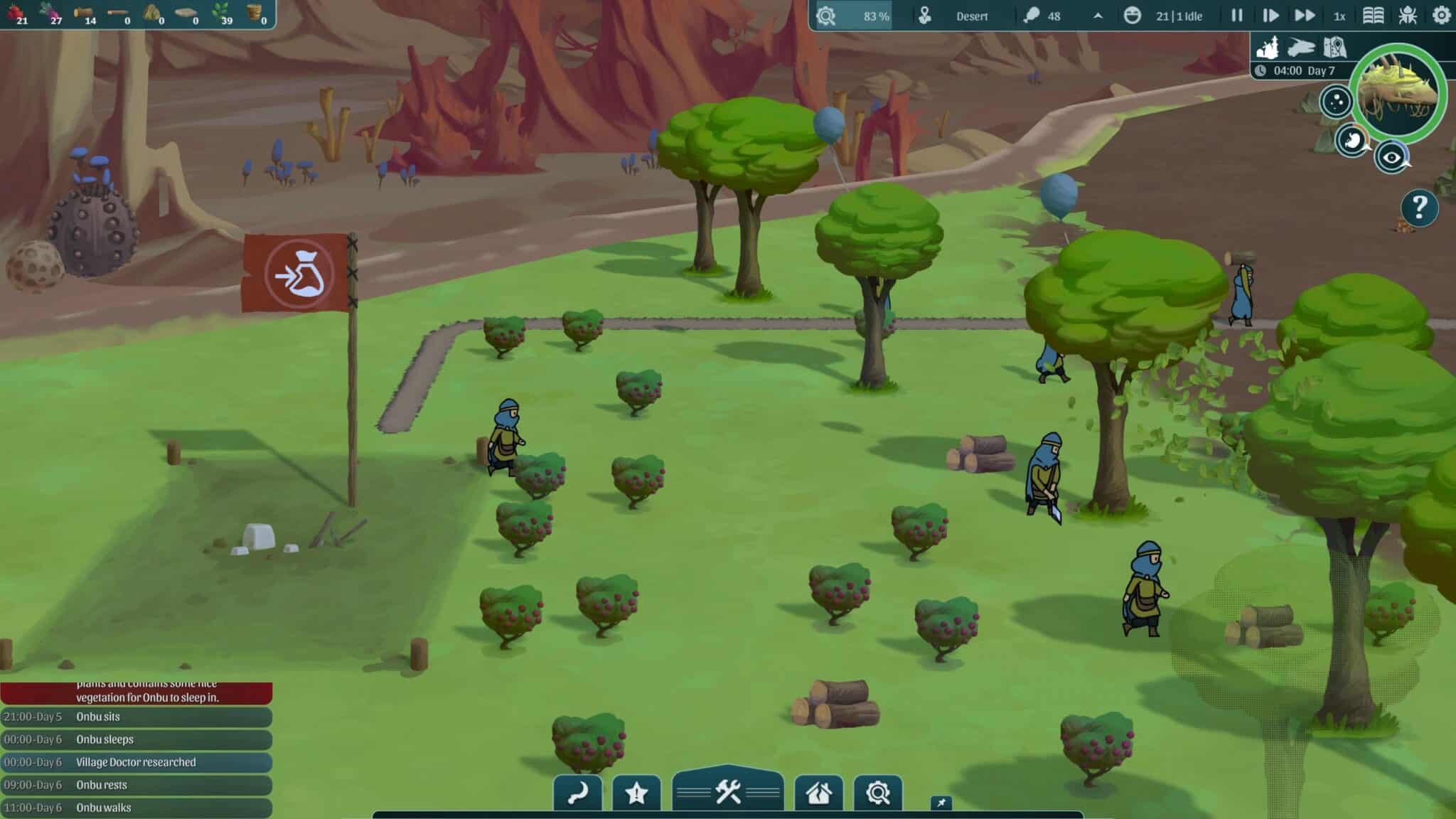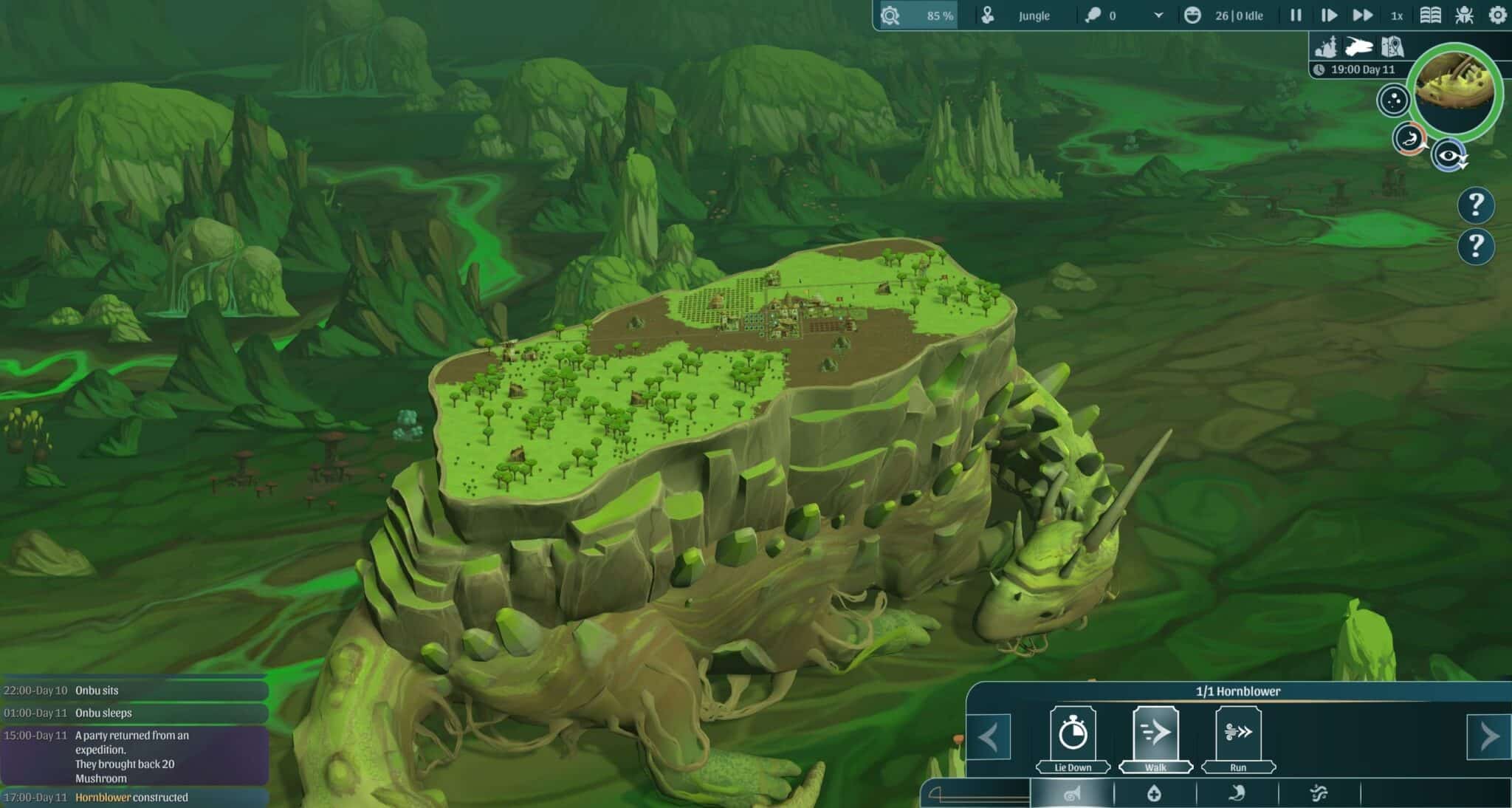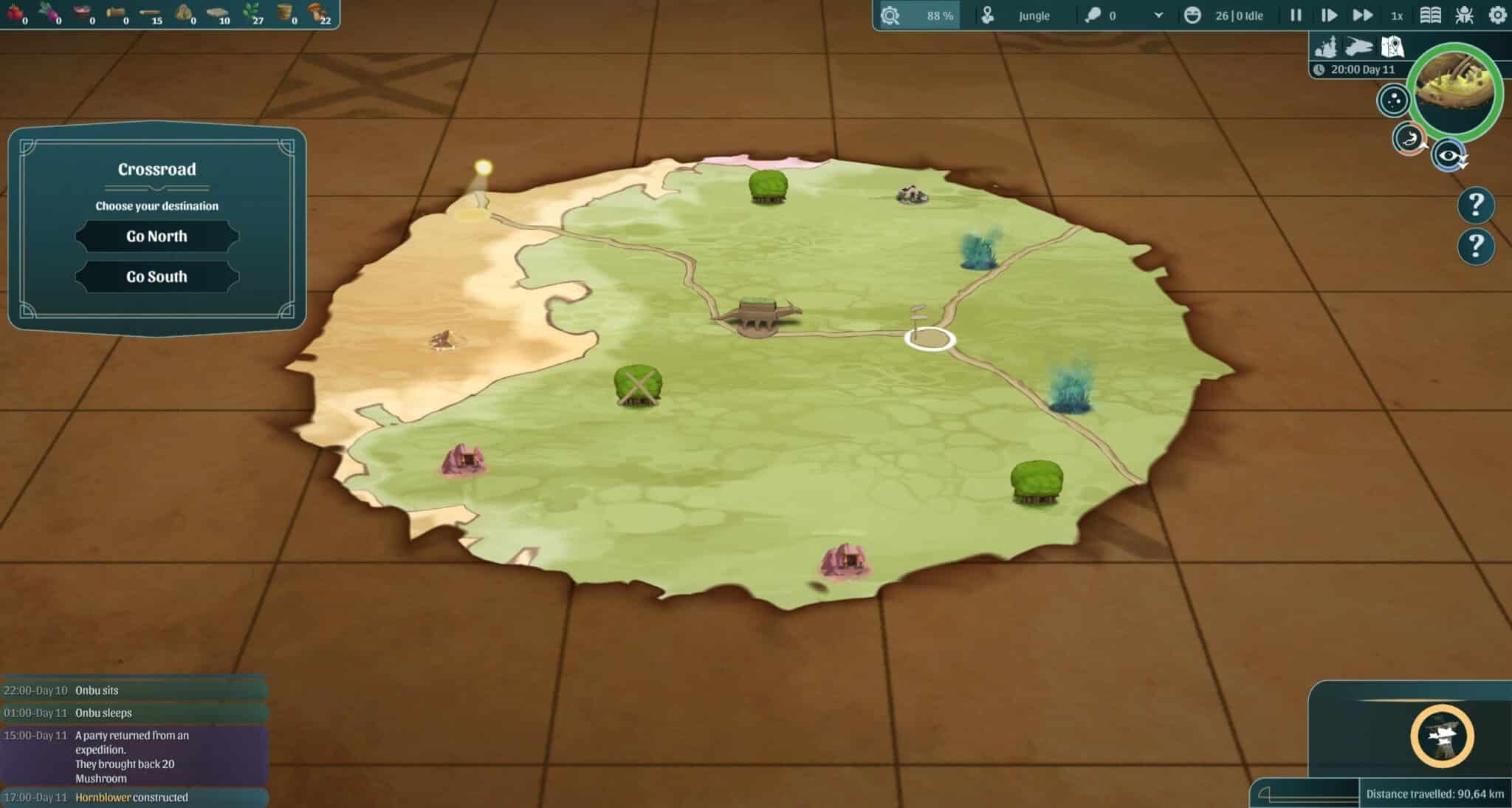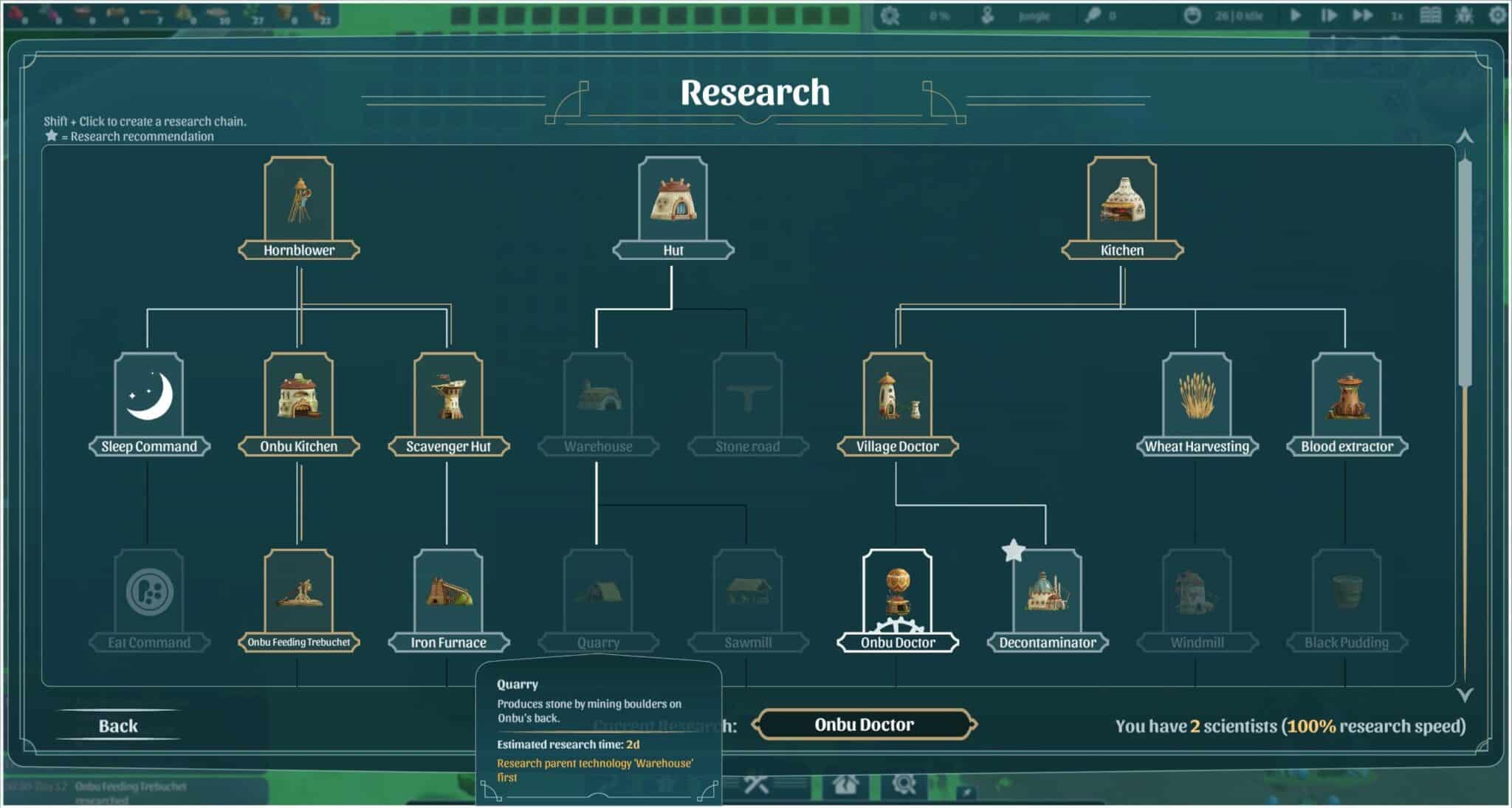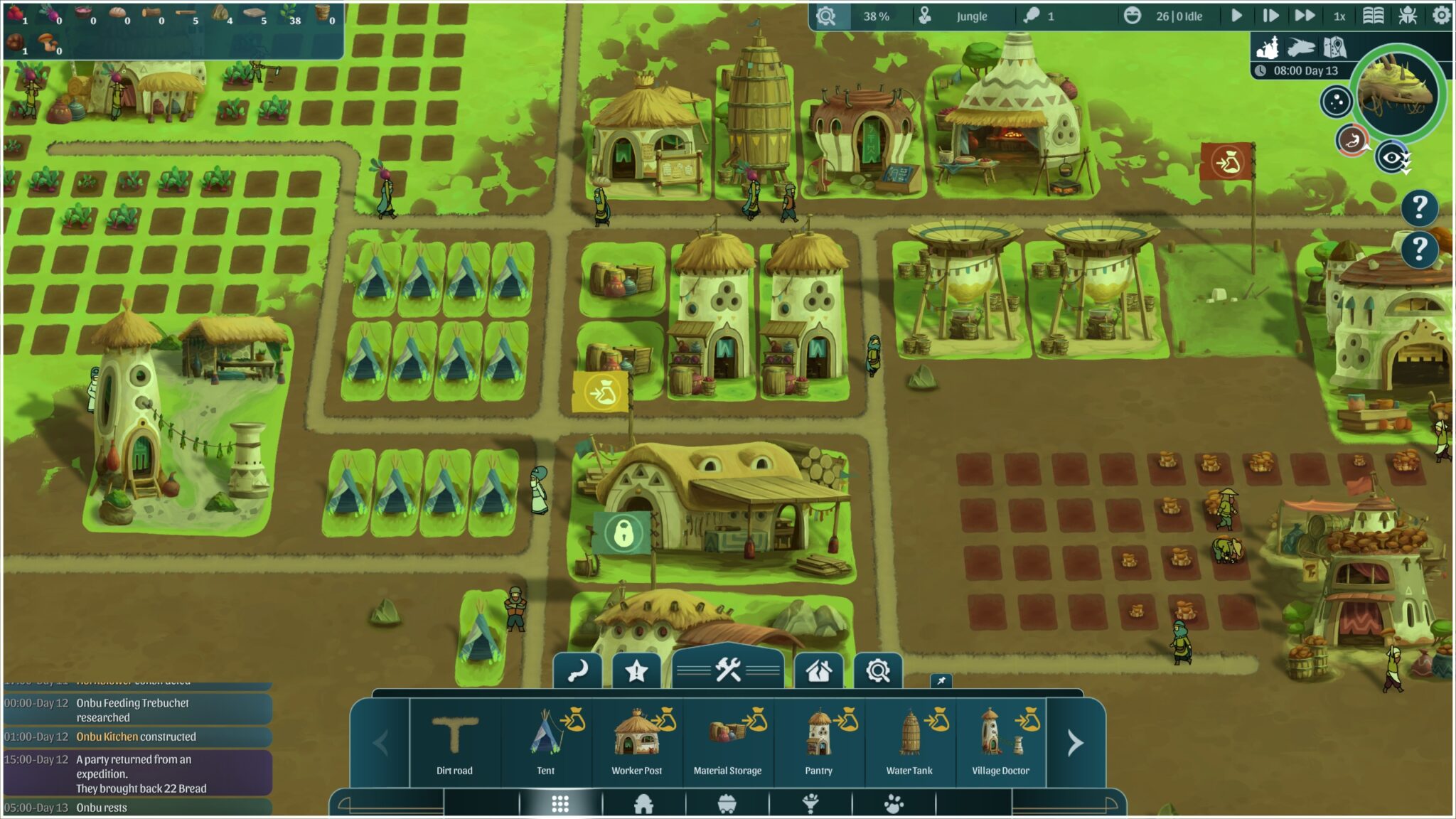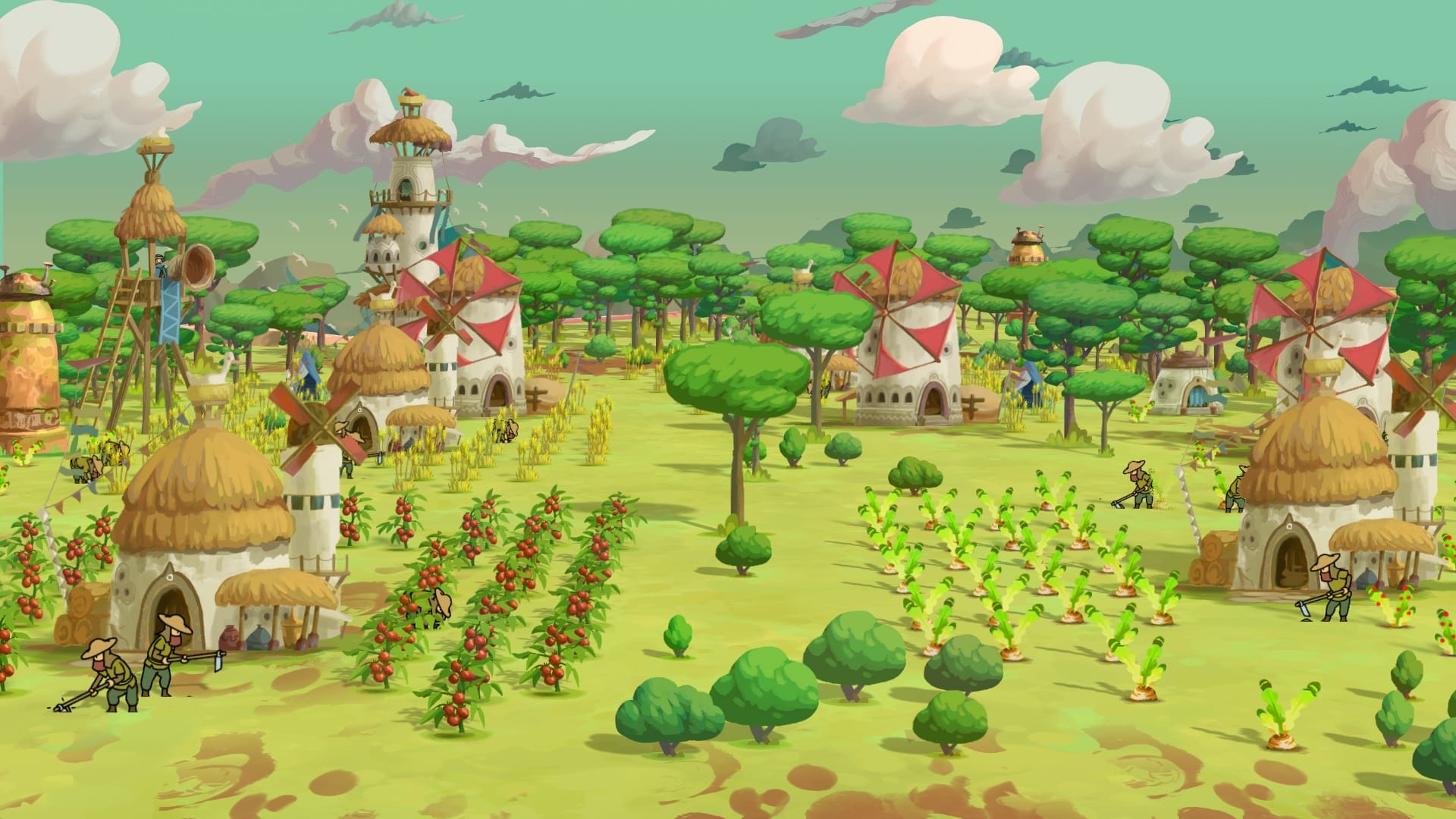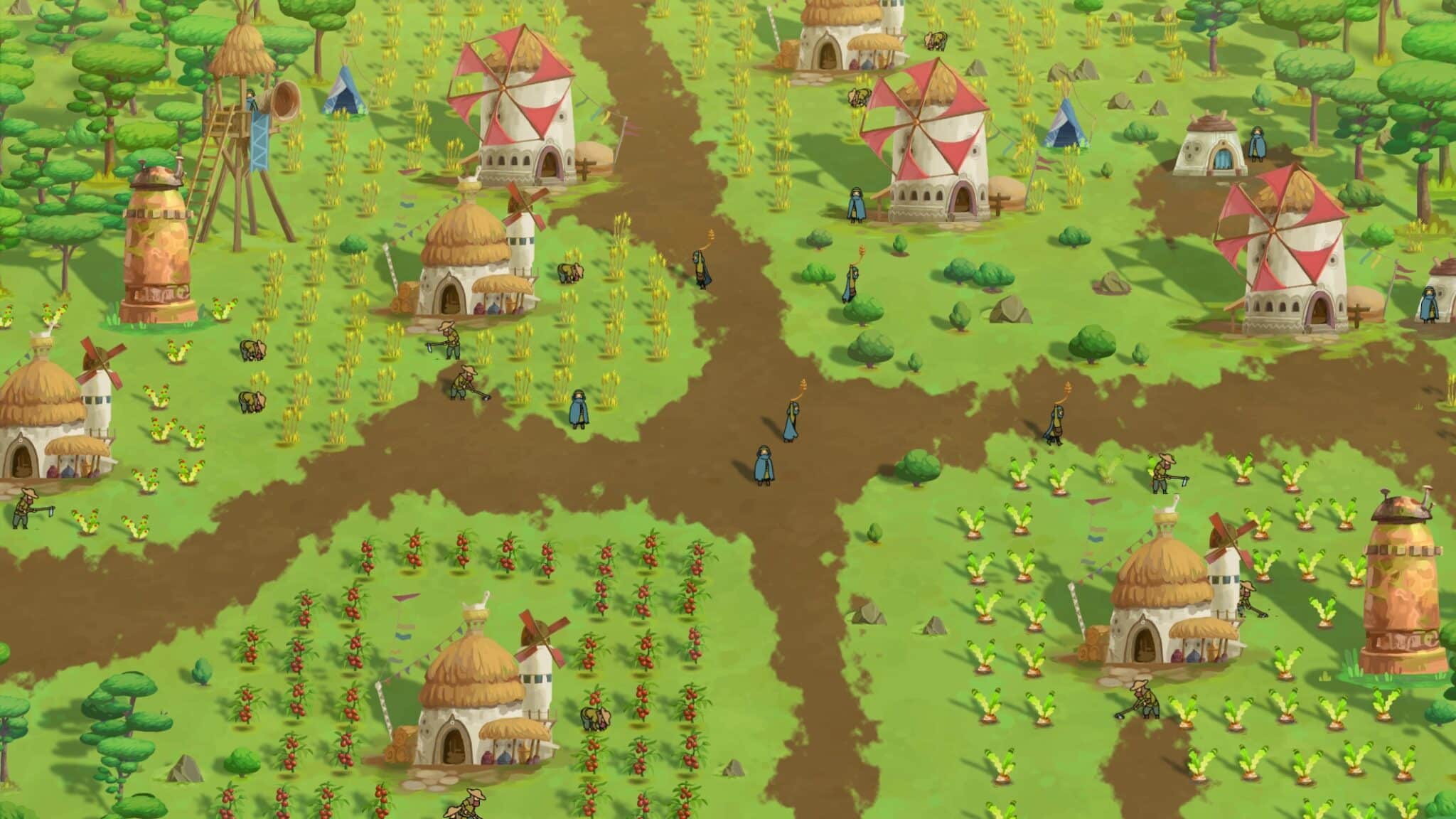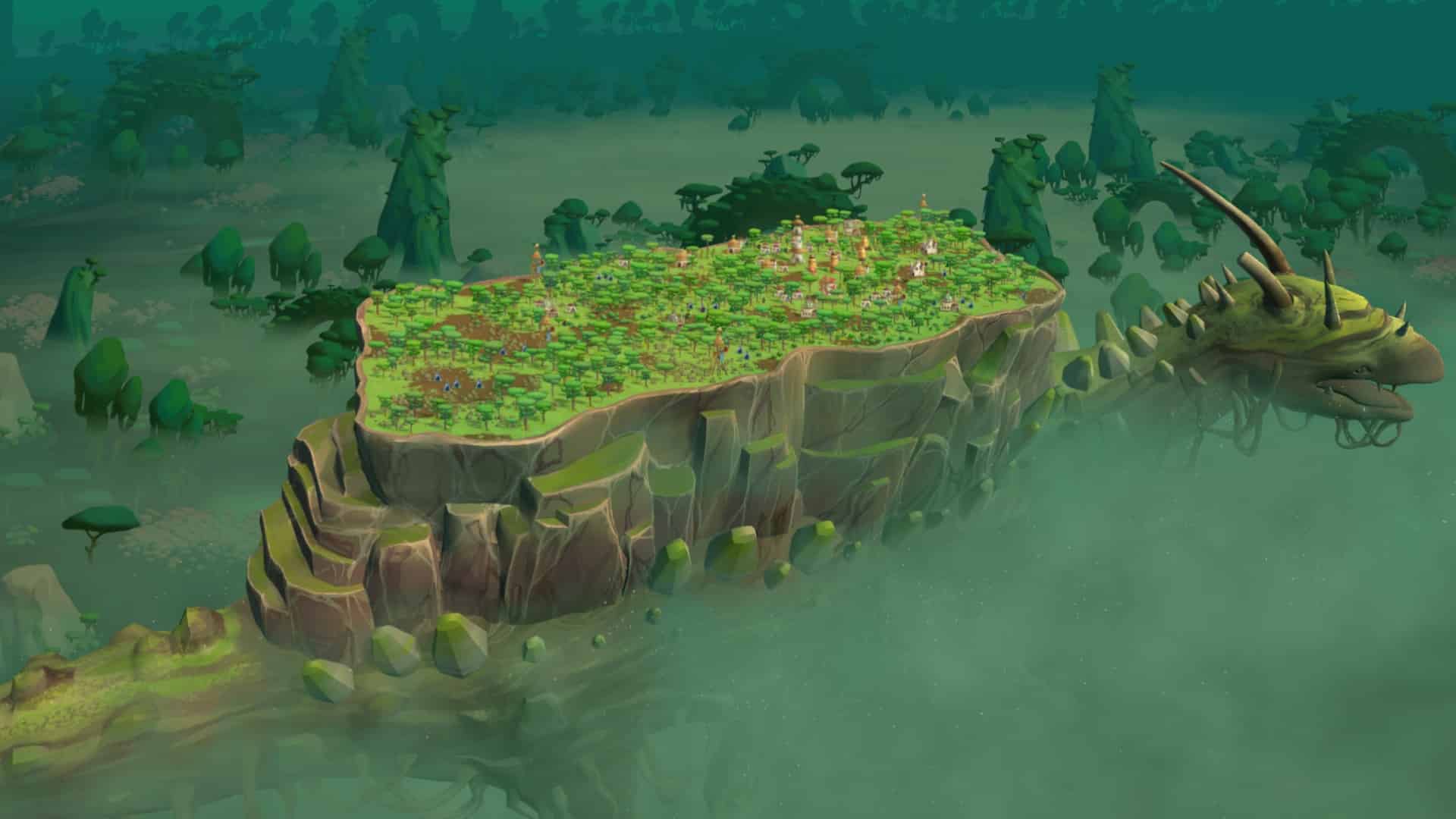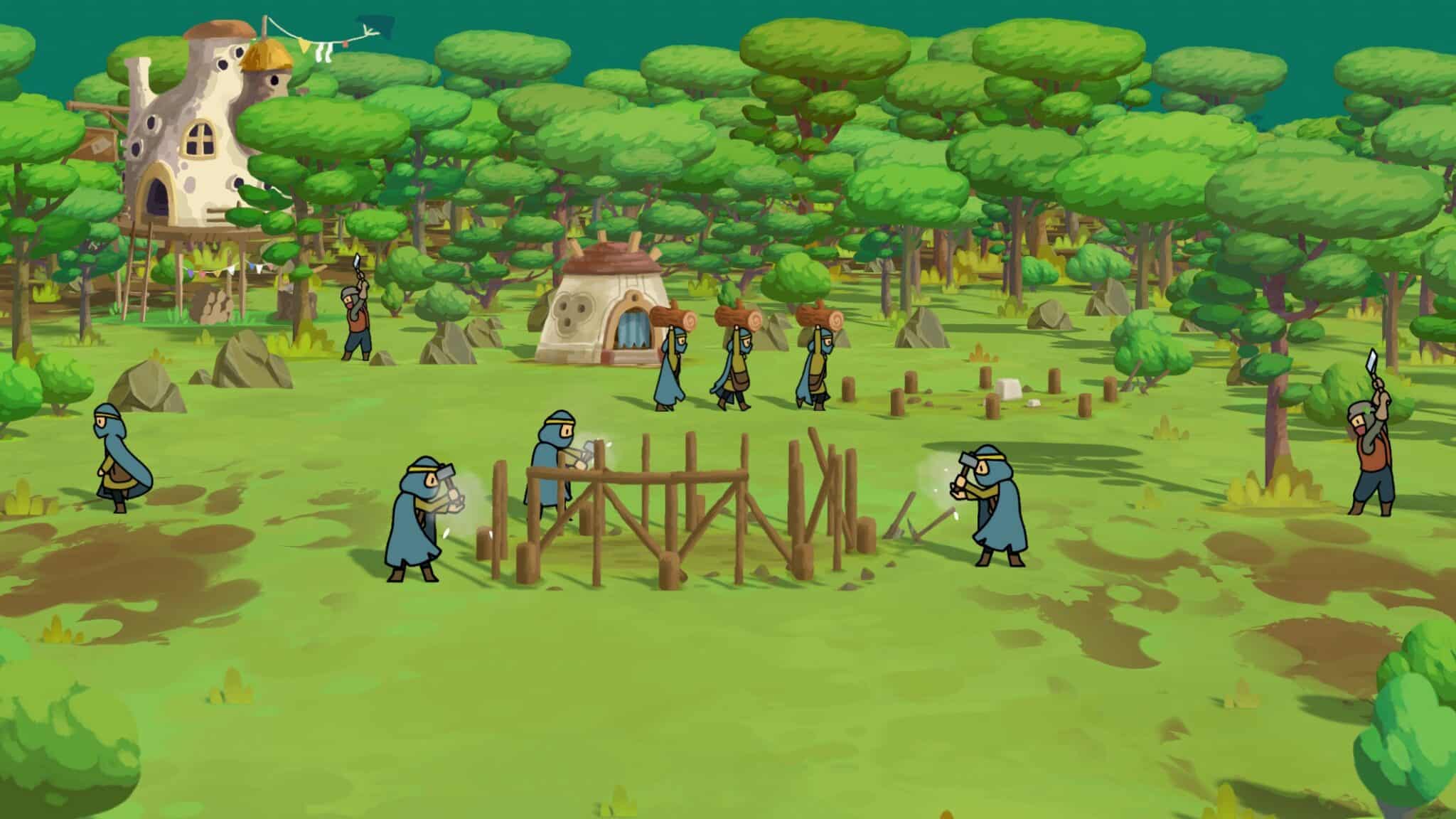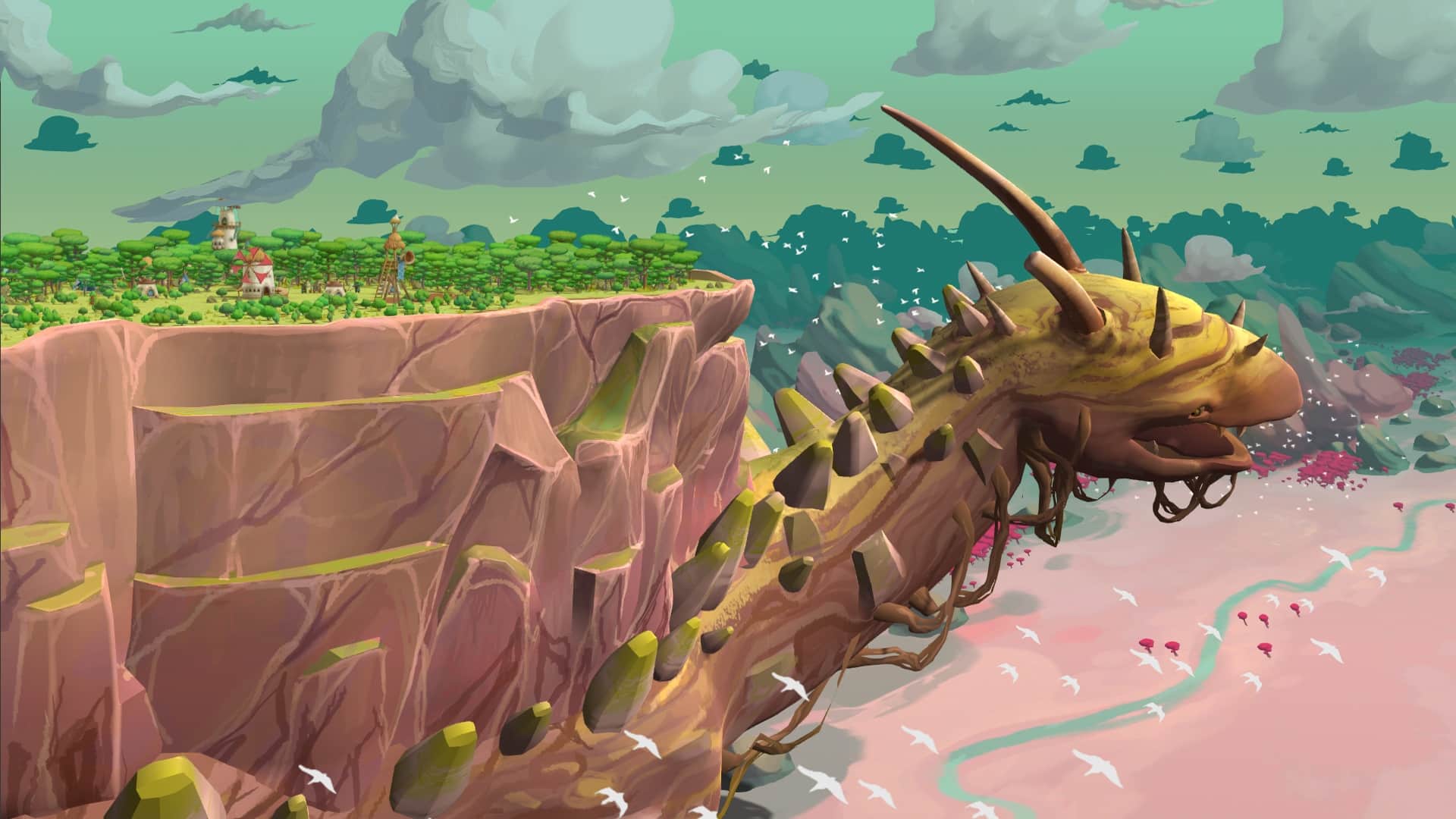In this original building simulation, you simply take your village on an exciting journey. The test shows whether this works as well as it sounds.
Actually, Onbu doesn’t want to run any further, because the dark green stink cloud on the giant dinosaur’s path, including the village on its back, looks disgusting and dangerous even from a distance. But there is no other way, so the animal dives with hesitant step into the sporadic stench, whose viscous odeur immediately settles like slime on Onbu’s whole body.
The nomads who have found refuge on Onbu’s back and built a small settlement soon start coughing because of the poisonous air and are hastily attended to by the village healers. Then the decontaminators in protective gear move out with their flamethrowers as disgusting green plants grow on Onbu’s back and spoil the entire environment including the berry bushes that are urgently needed for survival …
This little scene from the everyday life of a nomad shows that The Wandering Village is not a comfortable building simulation. Instead, the survival aspect of the game likes to kick you in the knees from behind just when you think you have everything under control.
In our test of the Early Access version, we spent 20 hours playing to see if it really is as much fun as it looks and how much long-term motivation there is so far in what is probably the most unusual building game of the year.
Mushrooms, mushrooms everywhere!
Yet your journey through the dreamy post-apocalyptic game world, designed in a mixture of 3D and hand-drawn elements, begins quite innocuously. On the flat back of the giant earth elemental dinosaur Onbu, a homeless nomadic tribe has found a place safe from poisonous gases and deadly piz growth. There they gather berries, grow crops, chop down trees or pound rocks, craft their first primitive shelters and get resource processing going.
The different environmental conditions of the biomes you travel through, the weather and poison levels of the air as well as random events quickly make life difficult for your nomads and their good-natured host. You should also not neglect Onbu’s needs: The giant dinosaur, which walks slowly but steadily through the hostile world, needs to eat and sleep, is poisoned by the air just like the nomads and can injure itself. If your nomadic tribe dies or your friendly riding dinosaur is killed, it’s game over – and you start the next attempt in one of three difficulty levels.
Biome change
Each journey is unique, as the order of adjacent biomes such as desert, jungle or mountain is procedurally generated and you (or Onbu!) decide in each biome which of two possible directions to continue. The more you explore, the better you get at dealing with changing environmental conditions such as temperature, humidity and poison density. It works like this: Normally you collect dew in air wells and use the extracted water when farming. But in the desert, for example, the air is so dry that the air wells do not work.
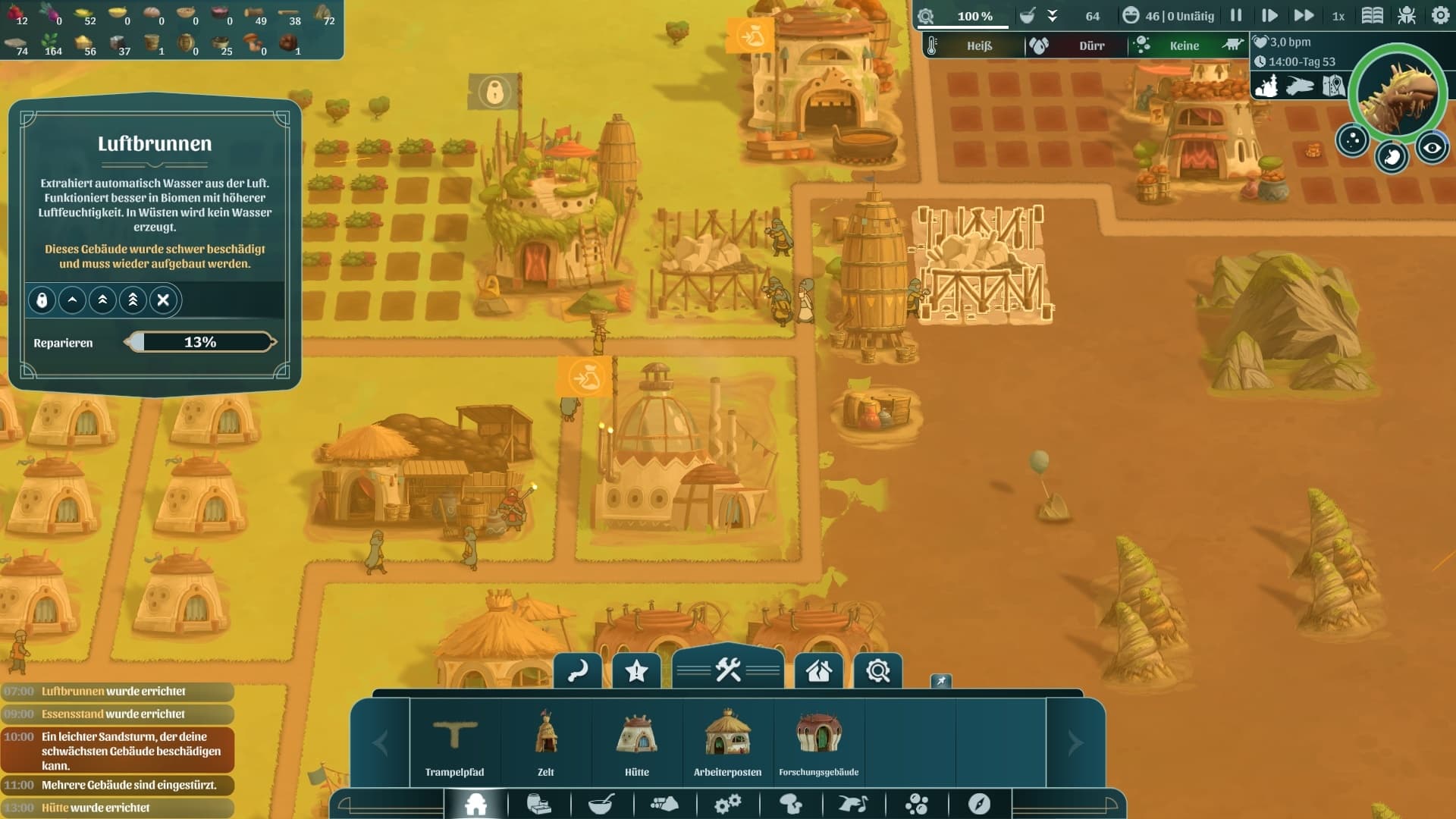
If you haven’t collected a lot of water in tanks, you’ll soon be stranded. If you research cactus cultivation, your nomads will grow the prickly plants in the field and obtain water from them, which makes every desert journey much easier. Each biome also offers unique resources such as sand, iron ore or knowledge, which you can have your scouts collect on the world map.
Variation comes into play through hurricanes, poison clouds, extreme weather and encounters on the way as well as events at resource nodes, you rescue survivors from settlements or meet them on the road. The survivors in particular are important for expanding your nomadic tribe, as workers for new buildings are always scarce. Depending on the situation, the only other option is to deactivate buildings that are not needed and redistribute the workers. An extra overview page would be helpful here, at the moment you still have to click on each building individually.
I’d rather stroke than pump blood
The more people your tribe comprises, however, the higher the demands of your nomads become. While at the beginning of the journey they are still satisfied with hand-to-mouth berries and simple tents, by the time the village is fully developed, they will need several processed types of food and fancy little houses – and they cost money!
Once resources have been mined, they grow back very slowly, so only scouts or better technologies can help. With these you can selectively grow new trees or even build a stone mine that reaches deep into Onbu’s back. However, your earth dinosaur doesn’t like this at all; the more you mine, the more trust you lose with him.
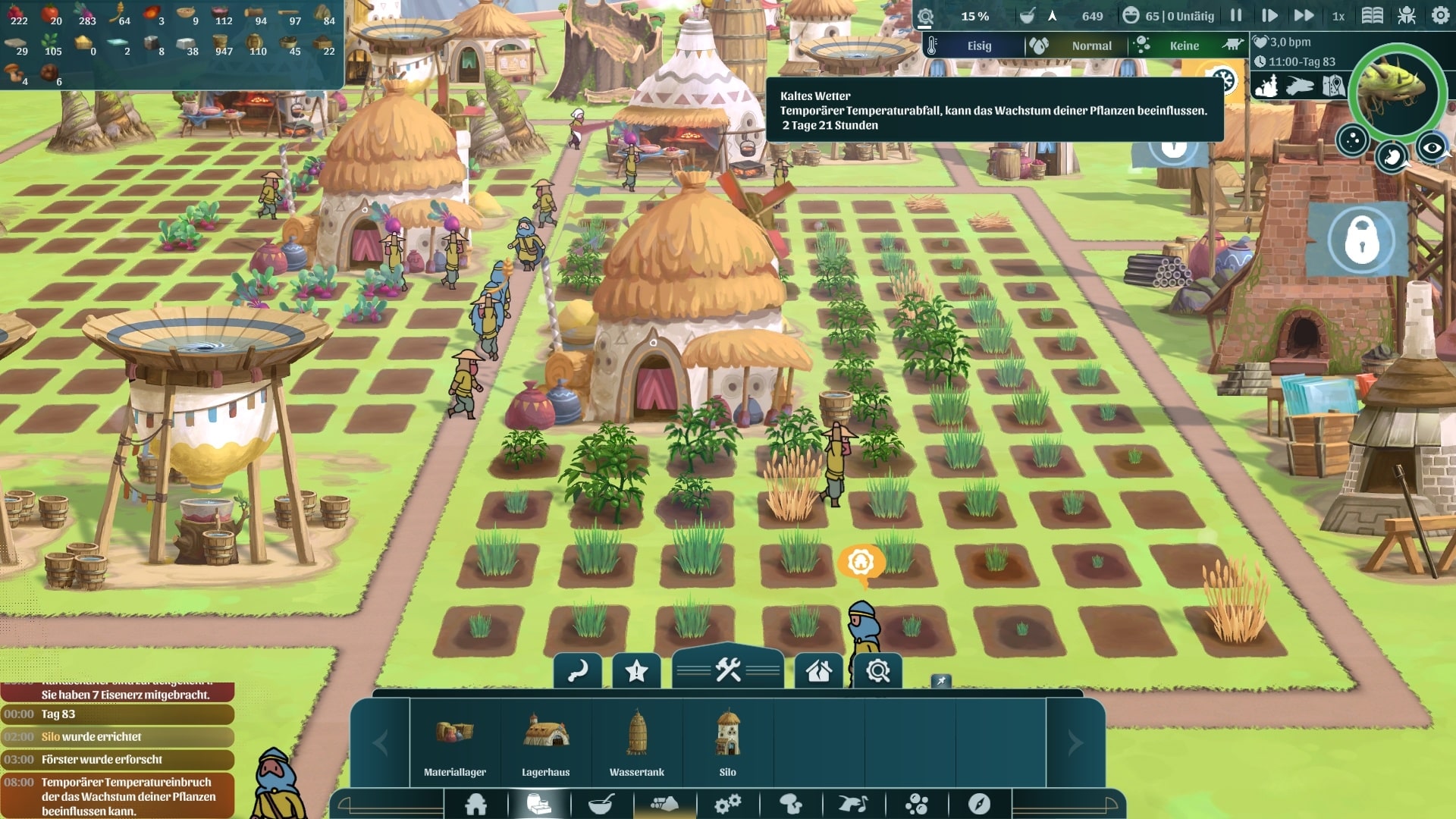
The issue of trust is always vital when communicating with Onbu via a horn blower. Various signals give him a direction at crossroads or encourage him to rather not eat constipation-causing mushrooms at the wayside. The more you exploit Onbu’s resources – you can even pump his blood to make delicious pudding for your nomads! – the less Onbu will obey your orders and eventually even try to get rid of the nomads.
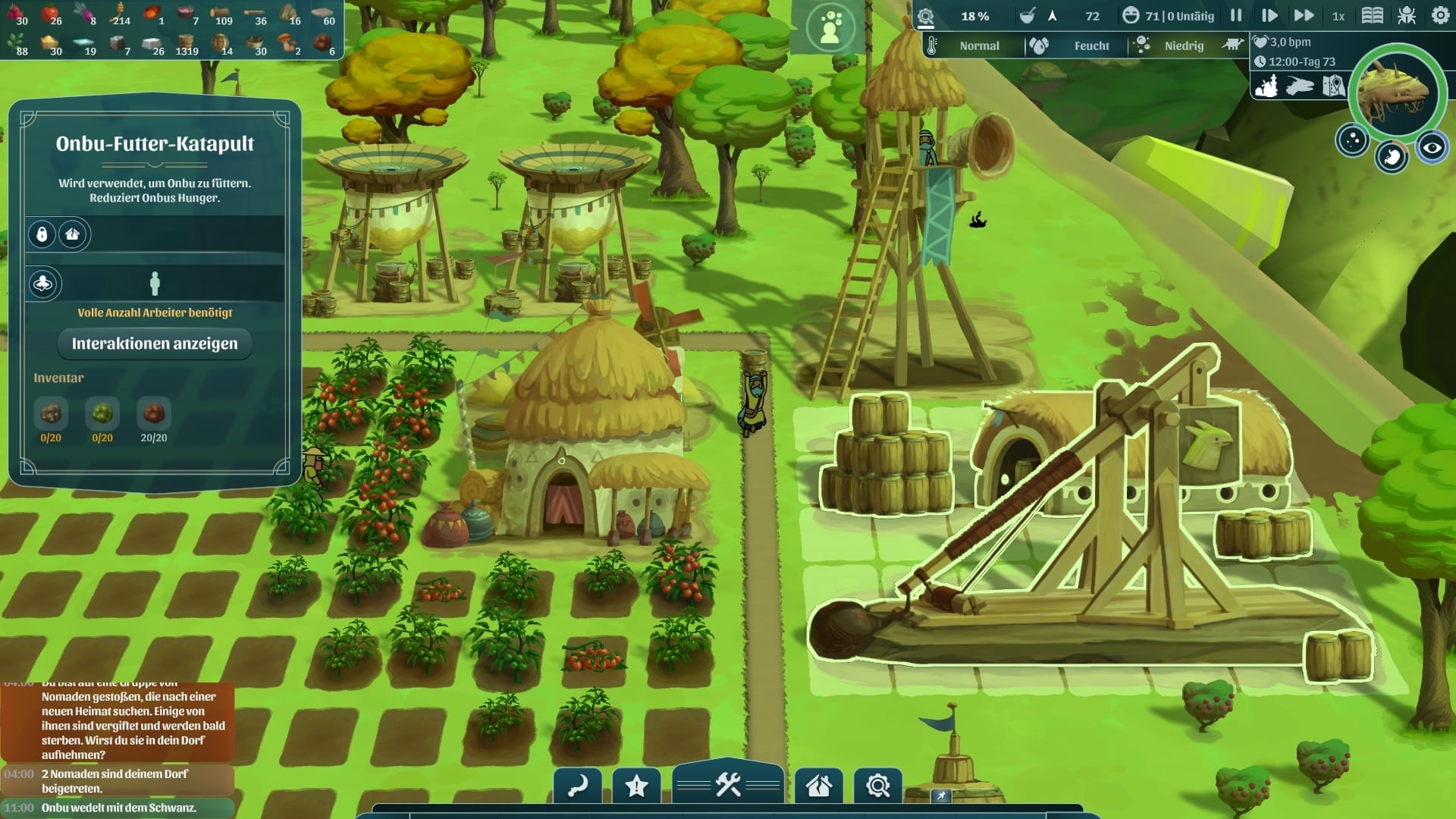
With petting, detoxing, healing and timely food, on the other hand, you build Onbu’s trust, painstakingly balancing the survival of your tribe with that of the Earth dinosaur. This is not only somewhat reminiscent of the earth, which is still being exploited far too ruthlessly by us humans, but we see the consequences of this much less directly than in The Wandering Village. In the game, it is also easier to take the yawning Onbu into your heart and build a connection with him when he is happy to receive attention.
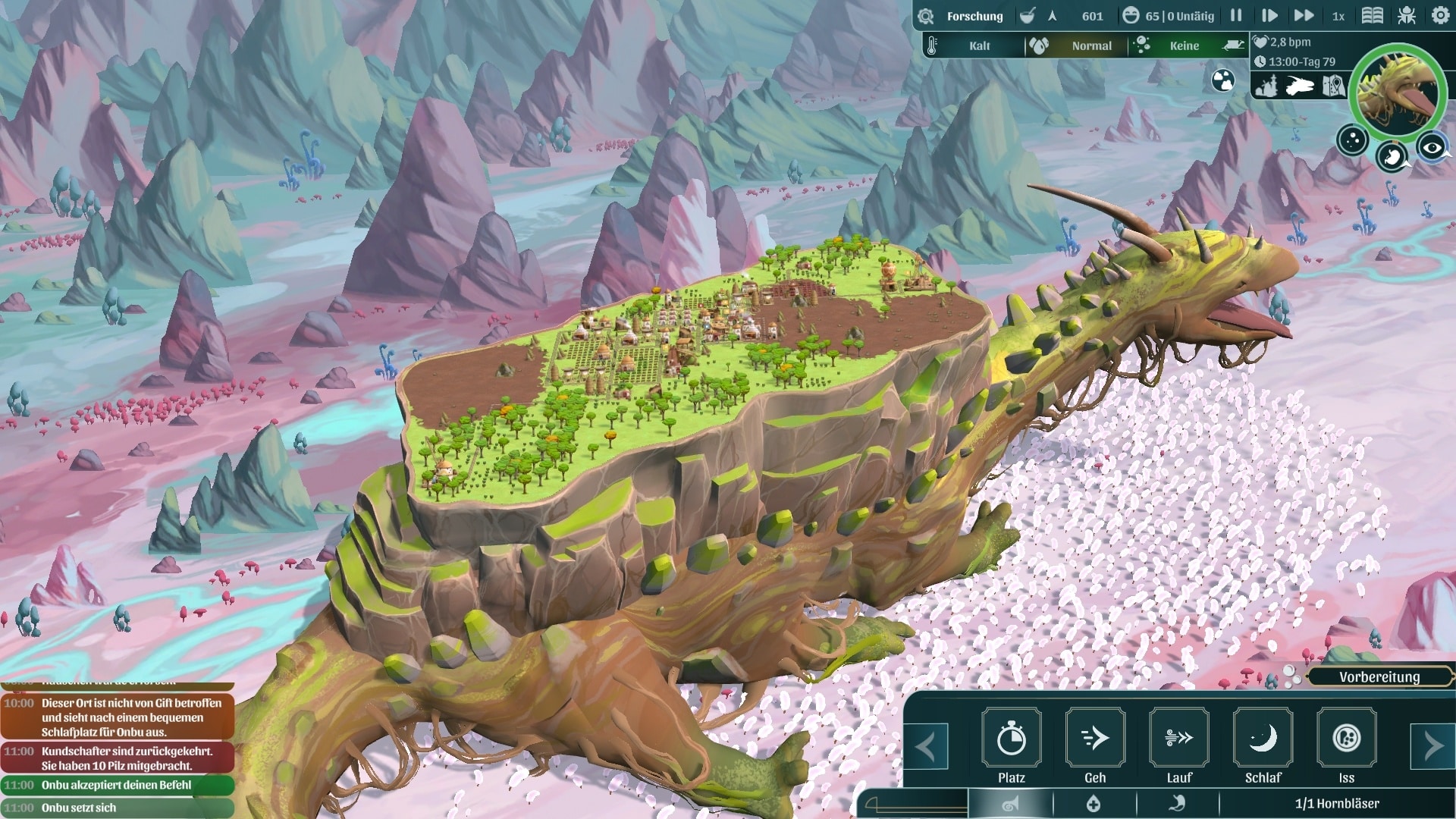
More story for more variety
Since even the hardest difficulty level is doable sooner rather than later with good optimisation and the events only increase in intensity and frequency, we hope for new challenges for the endless game during the upcoming Early Access phase. A campaign would also be nice to learn more about the game world. In fact, developer Straw Fawn Studios is planning the following for the next twelve months in Early Access:
“The full version will have a larger feature set and more content. We plan to add new building types, new biomes, new events/missions and expand the backstory of the game. The full version will also be more polished as it will have gone through many quality assurance tests.
We are also planning to integrate controller support into the game alongside other Steam features such as collectible cards and achievements. And finally, we are sure that players will have many interesting ideas during Early Access, which we will also implement ”
But even without this content, you can already get The Wandering Village (on Steam) (price 25 Euro), a bug-free, thoughtfully designed indie building game with a great soundtrack and moderate replay value.
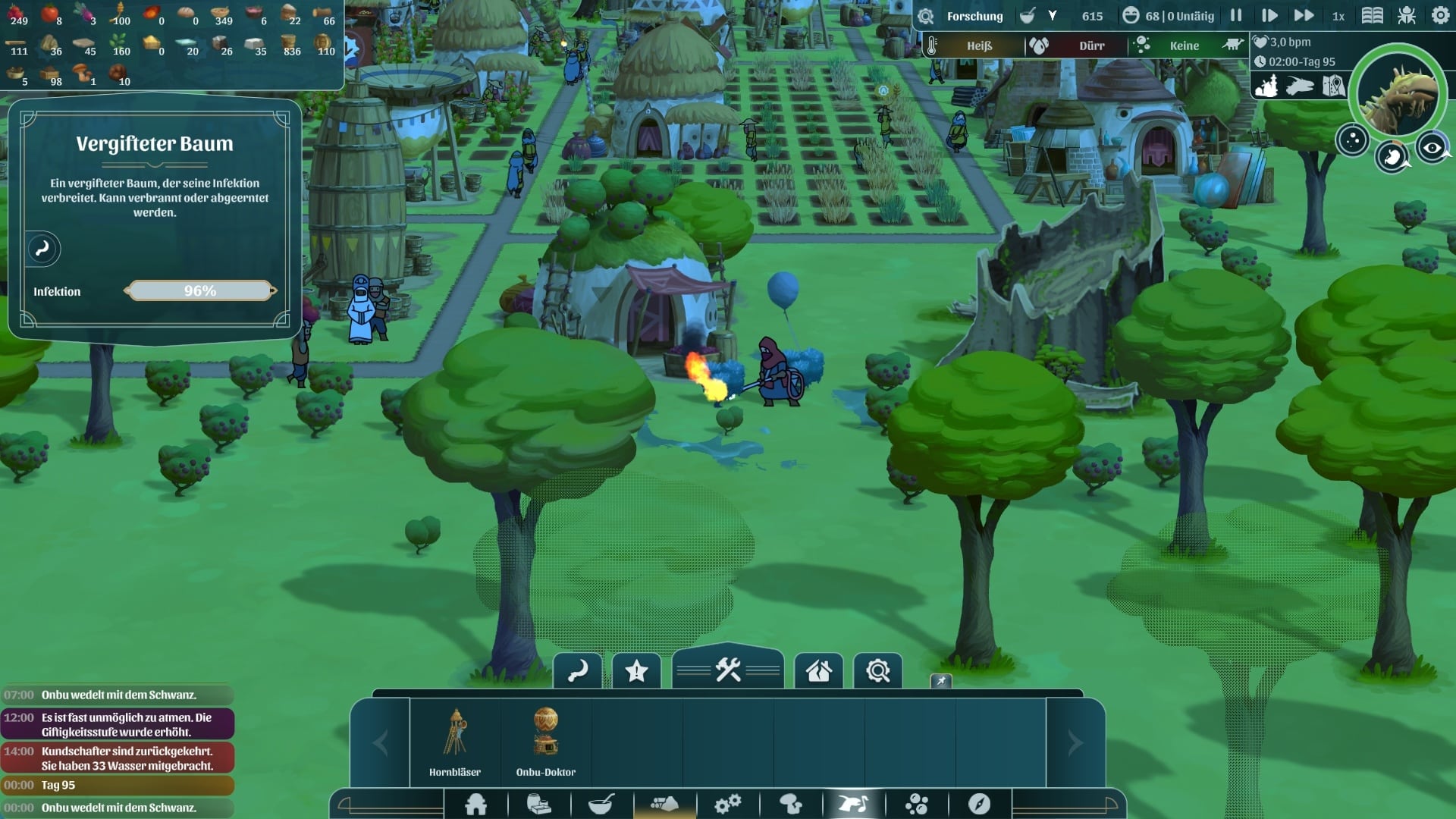
Editorial conclusion
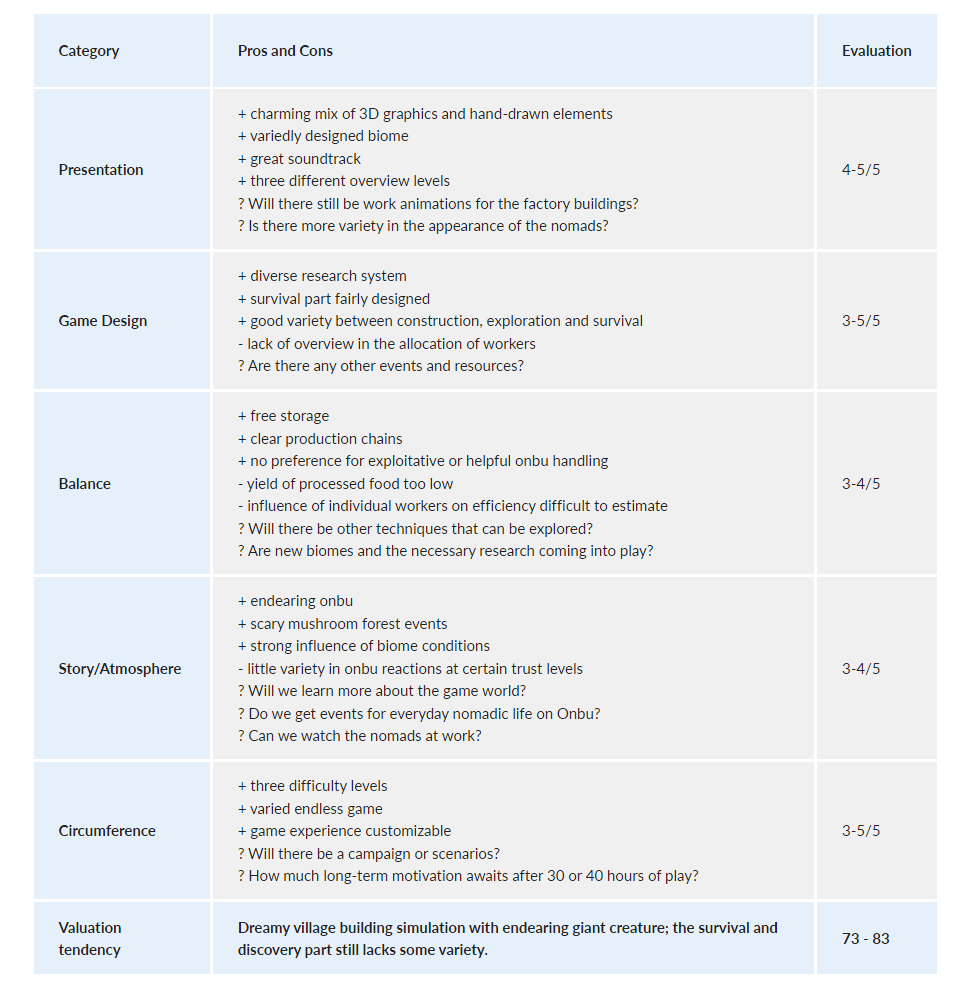
A building game with a village on a dino? That sounded whimsical enough to trigger my fondness for unusual indie games, and after my first glimpse of a trailer, I was hooked. I particularly liked the random aspect: even though I can choose where to travel once per biome, I only ever see part of the route ahead. Whether poisonous giant mushroom forests and extreme weather lurk in the invisible part of the map or I can pick up a few new nomads is always a surprise. I really like the pleasantly relaxed atmosphere and the great music that suits every situation. Besides, Onbu has grown extremely fond of me over time and I found it difficult to do even the smallest things that would cause him pain.
Especially the moment when we walked past a dead Onbu on the side of the road and my Onbu’s body language revealed that he was mourning for the mushroom-covered fellow dog has remained in my memory. A good start has definitely been made with the current state of the game: even after about 20 hours of testing, I’m not bored with the slow progress and I’m curious to see how my nomads continue to do. But I would like a bit more variety by now, as the events at the resource nodes in the world are starting to repeat themselves. But there’s still plenty of time for that during Early Access, I’m sure the dev team has a few more ideas in store.

